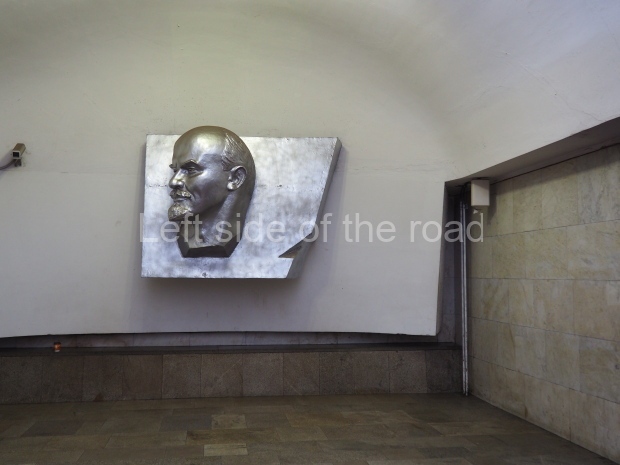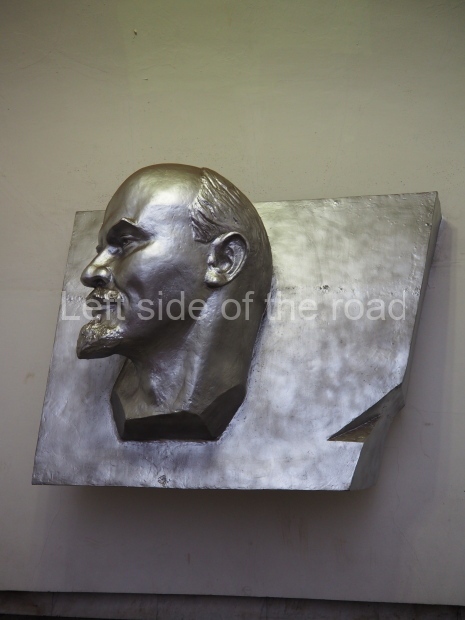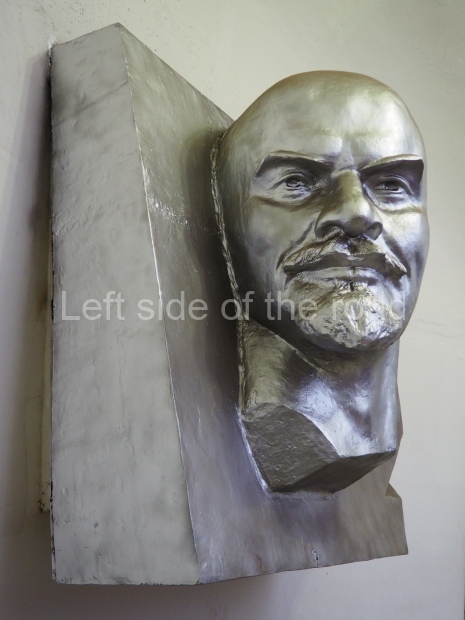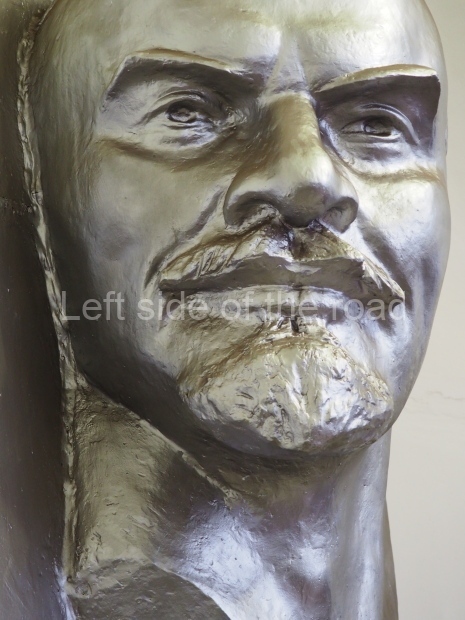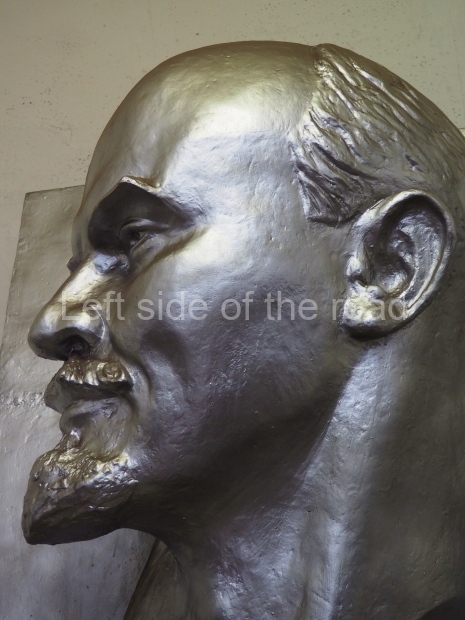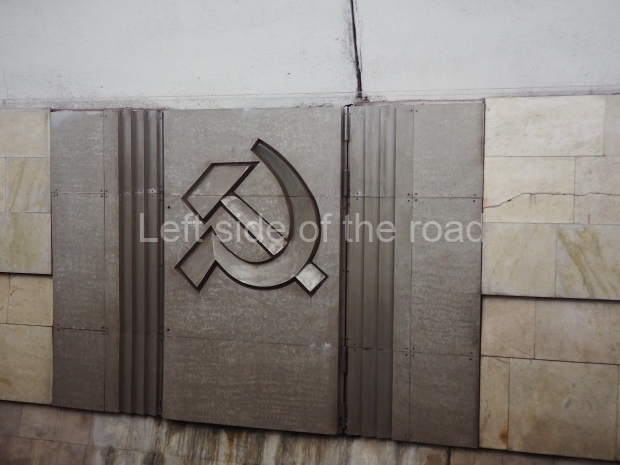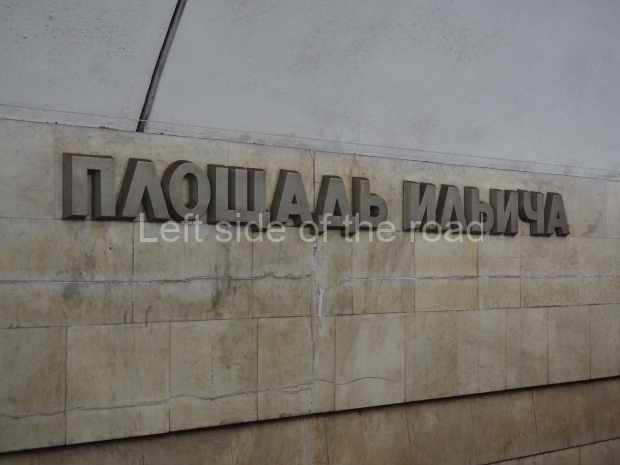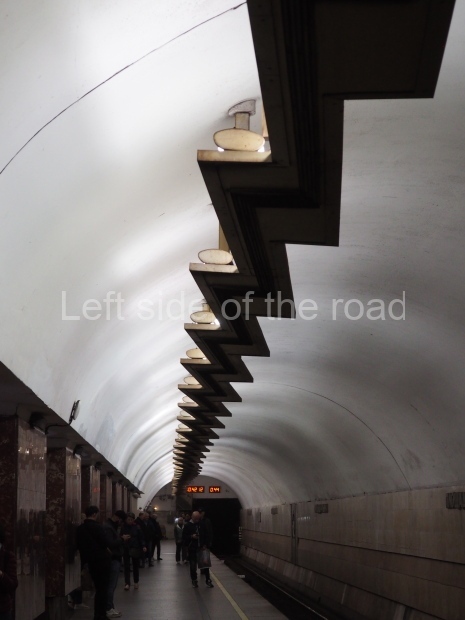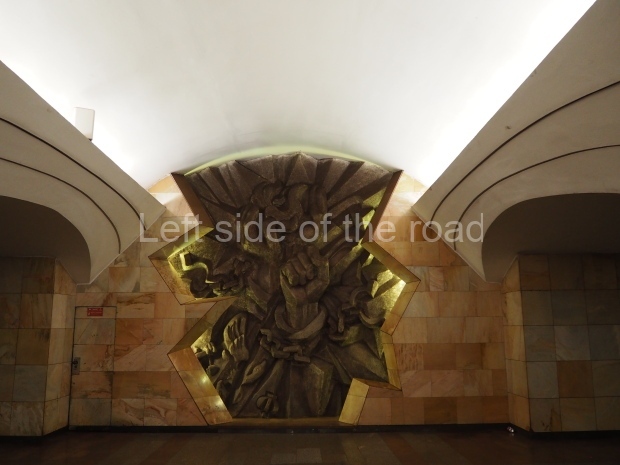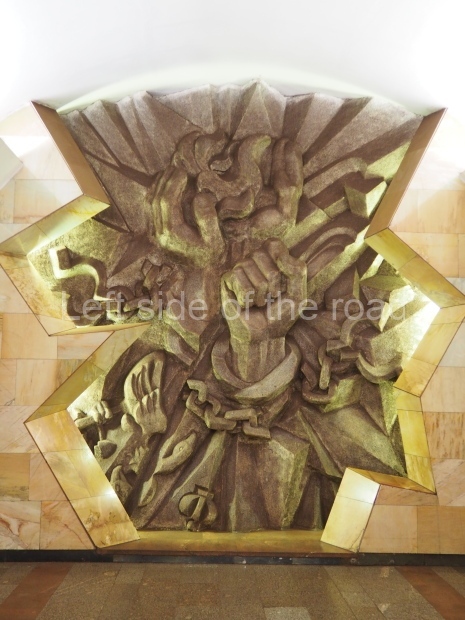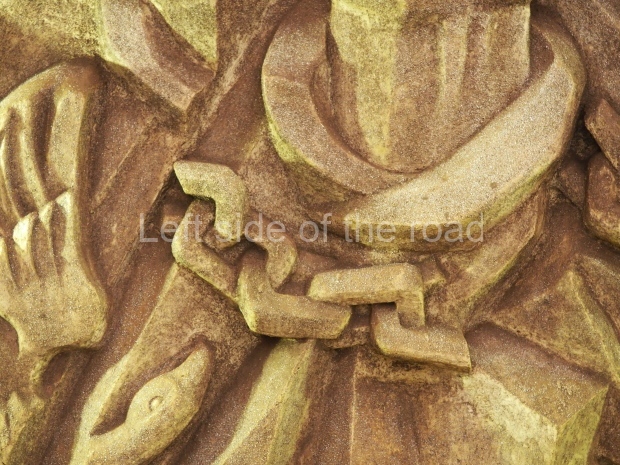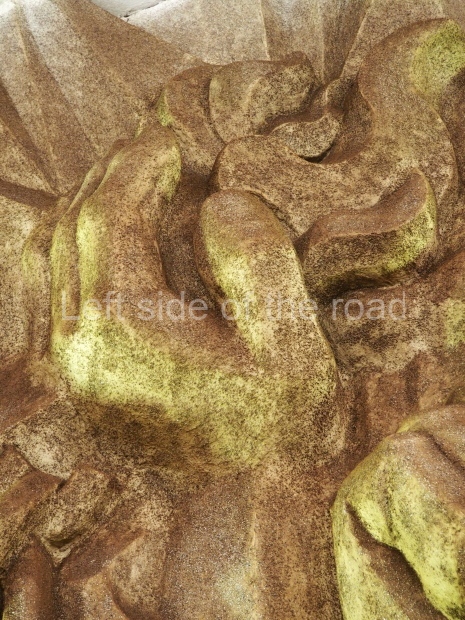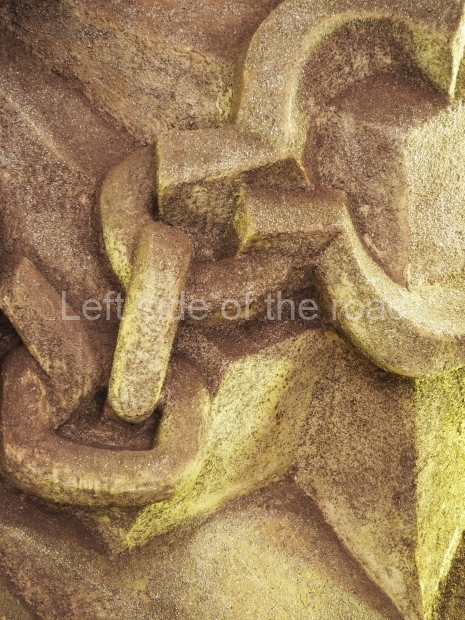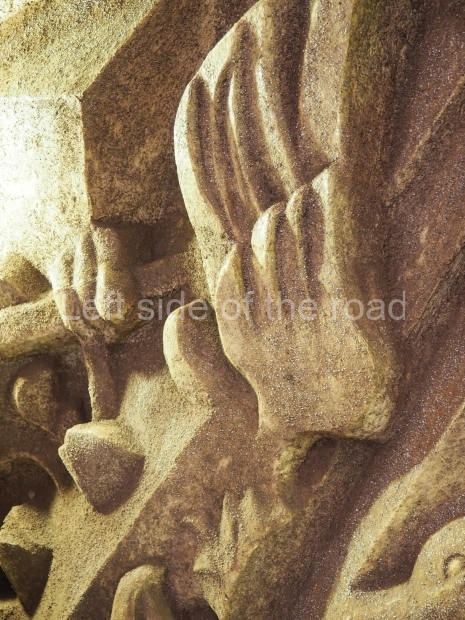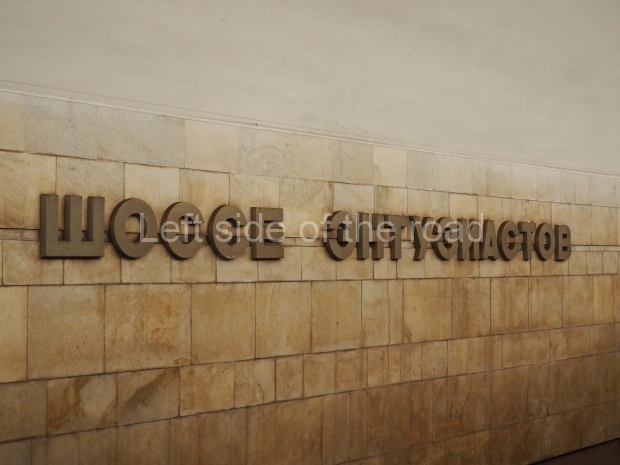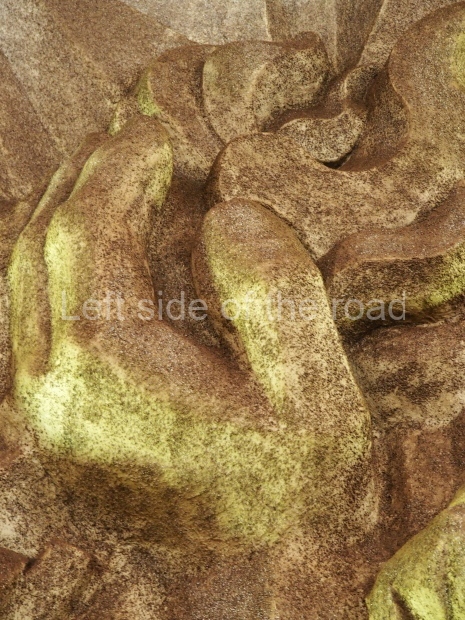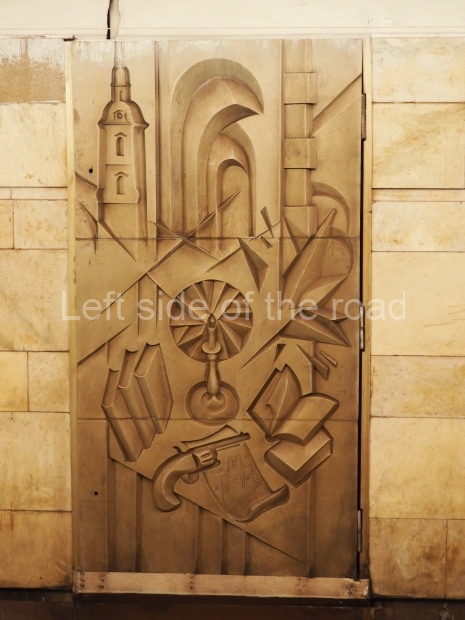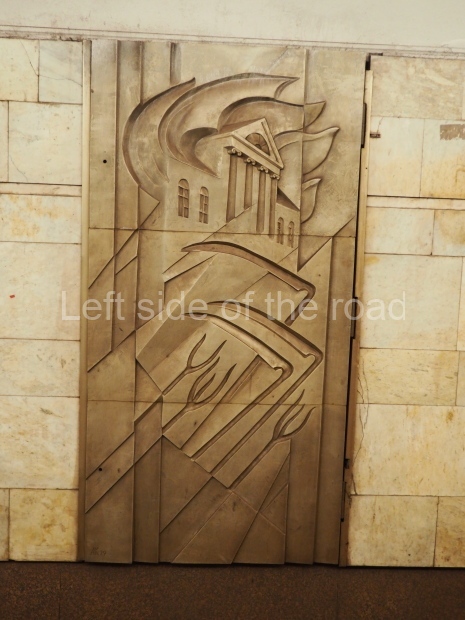
Usama Assaf – 4 years old – after losing his entire family in Zionist attack – June 10, 2025
More on Palestine
October 07, 2023 – Palestine’s ‘Tet’?
October 07, 2023 – Palestine’s ‘Tet’? – from October 2023 to end of February 2024
October 07, 2023 – Palestine’s ‘Tet’? – from March to end of May 2024
October 07, 2023 – Palestine’s ‘Tet’? – from June to end of July 2024
October 07, 2023 – Palestine’s ‘Tet’? – from August to end of October 2024
October 07, 2023 – Palestine’s ‘Tet’? – from November to the end of December 2024
October 07, 2023 – Palestine’s ‘Tet’? – from January to end of March 2025
October 07, 2023 – Palestine’s ‘Tet’? – July 01 to end of September 2025
October 07, 2023 – Palestine’s ‘Tet’? – from October to end of December 2025
October 07, 2023 – Palestine’s ‘Tet’?
Due to the failure of the international ‘community’ to do anything to stop the genocide and ethnic cleansing (over almost five months now) by the US-backed Zionist settler state in Occupied Palestine in Gaza the links to articles/podcasts etc., shining a light on this humanitarian disaster has grown exponentially.
On this page (and in posts that cover the months following 7th October 2023, see the links above) the aim is to present a view of this internationally – at least by the so-called ‘West’ – sanctioned mass murder.
Reference material
Some people who visit this page might be familiar with the terms that are commonly used in the articles, the links to which are provided below. However, some may not. That being the case it seems to be a good idea to give a few definitions of some of the more often used terminology. These definitions have been provided by Comrades at bannedthought, a site that also provides a great deal of material about revolutionary movements throughout the world.
Zionism
‘Two-state solution’ (Palestine)
Zionism — and the creation of Israel
Zionism — and imperialism
‘Greater Israel’
Nakba
For some of the documents that explain that what the US-backed Zionist settler state is now carrying out in Gaza (and also in the West Bank) is nothing new – and is the basis of Zionism and the illegal establishment of the state of Israel – you might find it interesting to go to The Facts about the Palestine ‘Problem’ and Palestine – the background to the US-backed Zionist settler state.
01 April 2025
Trump’s State Department would support literally any Israeli atrocity.
01 April 2025
Another heinous war crime: Israeli army kills 15 first responders in Gaza.
01 April 2025
Trump administration says it has revoked at least 300 visas for Palestine advocacy.
01 April 2025
Smotrich resigns from Netanyahu government in protest at fellow fascist wanting more positions.
01 April 2025
UN/Red Crescent convoy recovers bodies of executed paramedics and rescue workers.
01 April 2025
Yemen is acting responsibly to stop genocide and the U.S. is bombing them for it.
01 April 2025
Israeli media more honest than UK equivalent over Israel’s genocide, war crimes.
01 April 2025
Israel orders mass ethnic cleansing of Rafah into tiny Mawasi in fresh crime against humanity.
01 April 2025
‘Every arrest that ICE has made is a political one’: How immigrant rights activists are fighting attacks on the Palestine movement.
01 April 2025
This is not about antisemitism, Palestine, or Columbia. It’s Trump dismantling the American dream.
02 April 2025
They tell you the Houthis attack ships, but they never tell you why.
02 April 2025
Netanyahu’s domestic woes – Max Blumenthal.
02 April 2025
Palestine Letter: The unfinished message coming out of Gaza.
02 April 2025
CIJA (Centre for Israeli and Jewish Affairs – Canada) lobbied or sponsored trips for 58% of MPs running in 2025.
02 April 2025
Palestine beyond the colonial logic of international law.
02 April 2025
Pro-Israel group that attacked UPenn was funded by family of UPenn trustee.
02 April 2025
Jewish pro-Palestinian protesters chain themselves to gates outside Columbia [University].
02 April 2025
Phil Giraldi: Department of Justice and Free Speech.
02 April 2025
How Israel secretly armed Argentina during the Falklands war.
03 April 2025
Evidence of ‘execution-style’ killings of Palestinian aid workers by Israeli forces, doctor says.
03 April 2025
Israel bombs Gaza school twice, once while rescuers trying to save trapped – kills 100+.
03 April 2025
Palestine missing from ‘Hands Off!’ March.
03 April 2025
European Commission ‘considers closing EU to all US goods’ – so why not Israel?
03 April 2025
17-year-old Palestinian child prisoner starved to death by Israeli prison guards.
03 April 2025
Hungary withdraws from ICC to avoid arresting Netanyahu.
03 April 2025
‘The dam has been broken’: Thousands expected in DC for Palestine march.
03 April 2025
UK politicians, ‘mainstream’ media ignore Israel’s announcement of West Bank annexation.
03 April 2025
US: end campaign of draconian campus arrests.
03 April 2025
Senate rejects Sanders effort to block Israeli weapons sale as war on Gaza widens. [Democratic ‘progressives’ spent more than a year allowing the Biden Administration to carry out genocide and ethnic cleansing in Gaza – but only now, with a republican in office, they come out in opposition. Opportunists of the first order.]
03 April 2025
The Zionist assault on free speech – John Mearsheimer.
03 April 2025
Media’s response to Trump restarting the Gaza genocide? Mostly ignore it.
03 April 2025
This college staffer lost her job after showing a film critical of Israel. Now she’s suing over free speech.
04 April 2025
The graver Israel’s atrocities in Gaza, the quieter the BBC grows.
04 April 2025
Opposing the Gaza Holocaust is just the basic, bare minimum requirement to not suck as a person.
04 April 2025
Jewish-US doc Perlmutter – Israel shot and blinded Gaza nurse who wouldn’t leave patients.
04 April 2025
Israel burned and beheaded children in Gaza this week (video) – with UK government’s help.
04 April 2025
Netanyahu is using the war on Gaza to consolidate power.
04 April 2025
JLM (Jewish Labour Movement) pro-Israel organiser Velleman ‘forced to resign’ as councillor ‘under cloud of darkness’.
04 April 2025
Weeks after returning to their homes, Gaza City residents are being forced to evacuate under Israeli fire – again.
04 April 2025
Intel Round table with Larry Johnson and Ray McGovern: Weekly wrap. Judge Napolitano.
04 April 2025
Beyond Signalgate: understanding the real scandal in Yemen.
04 April 2025
The destruction of Gaza’s healthcare infrastructure.
04 April 2025
Maersk: The shipping company transporting arms to Israel.
04 April 2025
The Liberals are dodging questions about a new Israeli arms contract. [Canada]
04 April 2025
Muslim scholars issue ‘fatwa‘ calling for ‘jihad’ against Israel as strikes pummel Gaza.
04 April 2025
Oil prices crumble as Saudi Arabia throws in the towel on restricting supply.
05 April 2025
Phone footage exposes Israel lie, shows paramedics had lights and hi-viz on when murdered.
05 April 2025
Truth is antisemitism. Protest is terrorism. Dissent is Russian propaganda.
05 April 2025
Trump boasts like deranged teenager as US slaughters civilians gathered in Yemen for Eid.
05 April 2025
Trump is playing a dangerous game with Iran.
05 April 2025
The Jewish community cannot center fears about ‘Jewish safety’ while supporting genocide in Gaza.
05 April 2025
Massive protest for Palestine rocks DC as Gaza genocide begins anew.
05 April 2025
Trump posts video of US strike in Yemen.
06 April 2025
US builds mass force around Iran to support Israel’s genocide and expansionism.
06 April 2025
Trump shares collateral murder-style snuff film on 15th anniversary of collateral murder.
06 April 2025
Israel lobby fails to stop Albanese’s UN re-accreditation as Special Rapporteur for Palestine.
06 April 2025
Israel slaughters children in Al Nakhil St massacre. Lammy condemns expulsion of MPs.
06 April 2025
Palestinian Christians reject U.S. Catholic Bishops collaboration with pro-Israel group.
06 April 2025
Mahmoud Khalil’s ‘Letter to Columbia’ from jail.
06 April 2025
Gaza is a graveyard of the Muslim world’s conscience.
06 April 2025
‘Infinite License’.
06 April 2025
American Universities are complicit in their own destruction.
07 April 2025
Hamas succeeded in exposing the true face of the empire.
07 April 2025
Lawyers, researchers submit war crimes dossier vs 10 British citizens involved in Gaza genocide.
07 April 2025
Alastair Crooke: Trump demands the impossible from Iran.
07 April 2025
Larry Johnson: US and the Zionist settler state and their threats against Iran; NATO playing with fire over the Ukraine.
07 April 2025
Legitimate Targets: Trump fails to negotiate with Russia while threatening war with Iran. Jackson Hinkle with Max Blumenthal.
07 April 2025
No EU country will arrest Netanyahu on ICC warrant – Belgian PM.
07 April 2025
Trump announces surprise Iran talks during Netanyahu meeting.
07 April 2025
Trump White House holds Hamas ‘entirely responsible’ for Israeli execution of Palestinian medics.
07 April 2025
An ode to Rafah, as Israel orders the city to evacuate once again.
07 April 2025
Journalists burned alive, two killed, after Israel targets their tent near Nasser hospital.
07 April 2025
Palestinians speak out against Princeton welcoming Israeli war criminal on campus.
07 April 2025
No EU country will arrest Netanyahu on ICC warrant – Belgian PM.
07 April 2025
Activists occupy Global Affairs Office, call for Israel arms embargo.
07 April 2025
Israel’s Netanyahu lobbying US against F-35 sale to Turkey, sources say
08 April 2025
Charles Freeman: do Trump and Netenyahu need a war in Iran?
08 April 2025
Trump must continue to move toward Iran talks, even as Netanyahu tries to derail it.
08 April 2025
West Bank strike highlights Palestinian frustrations with ‘symbolic’ gestures of protest.
08 April 2025
Breaking the silence on Palestinian armed struggle.
08 April 2025
100+ Meta employees, including Head of AI Policy, confirmed as ex-IDF.
08 April 2025
Massive night-time bombing by Israel across Gaza, including Mawasi ‘safe zone’.
08 April 2025
Regarding the military threats of U.S. imperialism against Iran.
08 April 2025
Former occupation soldier abuses SOAS students protesting against genocide.
08 April 2025
Israel’s innocent oopsie-poopsie medical massacre mistake.
08 April 2025
Aaron Maté: the ignorance of Trump and the outright lies of Netanyahu in the Oval Office; the US government’s threats to ‘free speech’.
08 April 2025
Trump administration widens crackdown, revoking hundreds of student visas.
08 April 2025
Trump appears to be targeting Muslim and ‘non-white’ students for deportation.
08 April 2025
Trump and Netanyahu go full Orwell, Aaron Mate.
08 April 2025
Egypt’s grand mufti rejects fatwa for jihad against Israel as ‘irresponsible’.
08 April 2025
Birds of a feather – the Royal and Israeli Air Forces.
09 April 2025
Israel lobby group Labour Friends of Israel tagged for ban on entering Israel by pro-Israel fascist group.
09 April 2025
Israeli network censors report exposing October 7 ‘hero’ as hoaxer.
09 April 2025
4 kids among 9 killed in Israeli bombing of family home in Al-Shuja’iyya, Gaza.
09 April 2025
Israeli supreme court rules that starving Gaza is not starving Gaza.
09 April 2025
Israel targeted my colleague in an airstrike, claiming that he was a Hamas fighter. Israel is lying.
09 April 2025
Gaza is not Deir Yassin, and it never will be.
09 April 2025
Hamas files challenge to overturn UK terror designation.
09 April 2025
US intensifies crackdown on peaceful protest under Trump.
09 April 2025
Hungary’s exit from the International Criminal Court is a sign of the times. [But no mention here that the EU has stated that it would never abide by the ICC ruling on Zionist politicians and the fact that Netanyahu seems to be able to travel much of the ‘western’ world with impunity. See above 07 April.]
09 April 2025
AIPAC leader boasts of special ‘access’ to top Trump natsec officials in leaked audio.
09 April 2025
How Israel hunts and executes Palestinian medics.
09 April 2025
Birju Dattani lost his job for criticizing Israel—but he’s fighting back.
09 April 2025
UK military still lacks unit to track civilian casualties.
09 April 2025
The case against Mahmoud Khalil hinges on vague ‘antisemitism’ claim
10 April 2025
Israel lobby demands action against kids’ entertainer for wanting Palestinian children fed not bombed.
10 April 2025
Max Blumenthal with Glenn Diesen: The Zionist war on academic freedom.
10 April 2025
France looks to imprison pro-Palestine activists.
10 April 2025
Hillel’s empty words.
10 April 2025
Children slaughtered, maimed as Israel bombs family home.
10 April 2025
‘Psychologically tortured to the last minute’: Ahmad Manasra, arrested at 13, is finally free after a decade in Israeli prison.
10 April 2025
Killing paramedics: Israel’s war on Palestinian health.
10 April 2025
Trump administration admits it’s trying to deport Mahmoud Khalil over his political beliefs.
10 April 2025
The backlash against Israel’s western-backed crimes will fuel the far right.
10 April 2025
Why a workshop on anti-Semitism is accused of being anti-Semitic.
10 April 2025
Netanyahu laughs at Gazans suffering. Max Blumenthal.
10 April 2025
Judge says Trump can deport Mahmoud Khalil over his political beliefs.
10 April 2025
Fetterman joins GOP in voting to confirm Mike Huckabee as ambassador to Israel.
11 April 2025
Far-right Israeli settlements minister’s daughter accuses parents and brother of years-long sexual abuse.
11 April 2025
Beyond outrage: Israel’s execution of medical workers.
11 April 2025
Democracy disappeared.
11 April 2025
The Israeli Army is facing its biggest refusal crisis in decades.
11 April 2025
Film Review: ‘October 8’ skews antisemitism to attack Palestine activism in support of broader right-wing agenda.
11 April 2025
Trump faces Palestine.
11 April 2025
As Israel escalates strikes in Lebanon, residents say it ‘will not keep us from the path of resistance’.
11 April 2025
Israel bombs displaced people in tents in Gaza ‘safe zone’ – again.
11 April 2025
The lies that bind – John Mearsheimer.
11 April 2025
The art of the schlemiel – The Grayzone live. Max Blumenthal and Aaron Mate discuss Donald Trump’s botched declaration of economic war against most of the world, rising tensions with China and Iran, the escalating Israeli war on free speech in the US, new revelations of Washington’s control over the Ukraine proxy war, and more.
11 April 2025
‘People are hiding in their apartments’: Inside Trump’s assault on universities.
11 April 2025
Mahmoud Khalil and the Necropolitics of Trump’s deportation regime.
11 April 2025
Intel round table with Larry Johnson and Ray McGovern: Weekly wrap on Gaza and the Ukraine and all the rest.
12 April 2025
Daughter of Israeli minister says parents filmed her rape, asks police to protect her from them.
12 April 2025
Israel is about to empty Gaza.
12 April 2025
Israel extends theft of Gaza to two-thirds – and almost two-thirds is ‘designated kill zone’.
12 April 2025
What Ghassan Kanafani’s writing on the Palestinian anti-colonial struggle tells us about Gaza’s resistance today.
12 April 2025
Expect them to lie about China just like they lied about Gaza.
12 April 2025
5 million Bangladeshis march to demand an end to Israel’s genocide in Gaza.
12 April 2025
Trump’s Iran talks can succeed if the administration embraces reality rather than myth.
12 April 2025
What comes next in Mahmoud Khalil’s fight against deportation.
12 April 2025
‘An abrupt plunge into Hell’: Gaza after the ceasefire.
13 April 2025
Israel bombs Gaza’s Al Ahli Baptist hospital twice in one evening.
13 April 2025
It’s crazy and evil to support Israel’s atrocities because you think God wants you to.
13 April 2025
Israel just bombed the last operational hospital in northern Gaza — again.
13 April 2025
Leaked data reveals massive Israeli campaign to remove pro-Palestine posts on Facebook and Instagram.
13 April 2025
Stop the genocide abroad and the repression at home: Call for a national direct action on April 17.
13 April 2025
50 years since the Lebanese Civil War, Palestinian refugees cling to renewed hope for liberation and return.
13 April 2025
Occupation gives Gaza hospital 5 minutes to evacuate before bombing, leaving wounded nowhere to go.
13 April 2025
Continue to fight, even when you are weary.
14 April 2025
Man loses all six sons in Israeli airstrike on their soup kitchen vehicle.
14 April 2025
Every day the Gaza Holocaust continues, the empire tells the truth about itself.
14 April 2025
‘We are paving the path for a new world, a peaceful world’. Mohsen Mahdawi was kidnapped by ICE.
14 April 2025
A tale of two attacks: Masafer Yatta when the cameras aren’t rolling.
14 April 2025
Award-winning trauma doctor says Israel’s Gaza crimes make ‘Dante’s inferno look like tea party’.
14 April 2025
Israel’s escalating West Bank assault is part of a larger plan to split the territory in two.
14 April 2025
10% of Unite union’s policy conference motions demand action on Palestine – but crucial one missing.
14 April 2025
Kevork Almassian: Who controls Syria?
14 April 2025
Larry Johnson: Does the US understand Iran? The US threatens the world but are unable to defeat Ansar Allah in Yemen.
14 April 2025
Scott Ritter: The perils of US/Israel.
14 April 2025
Alastair Crooke: Trump/Netanyahu and chaos – looking at the Middle East and the Ukraine.
14 April 2025
Today’s ‘Death Squad’ Dems enable the Trump-backed slaughter in Yemen, Gaza, and beyond.
14 April 2025
Palestinian student leader was called in for citizenship interview — then arrested by ICE.
15 April 2025
Global charade: Israel, Palestine and the ‘rules-based order’.
15 April 2025
Call from Gaza unions to U.S. workers: Put your solidarity into action to stop the genocide.
15 April 2025
Karen Kwiatkowski: Israel and feral pigs – a tactic of the Zionist settlers to intimidate Palestinians.
15 April 2025
Palestinians fear Gaza’s largest cemetery has been destroyed. Not even our dead can have peace.
15 April 2025
Saying it’s antisemitic to oppose genocide is like saying it’s anti-Catholic to oppose paedophilia.
15 April 2025
Gaza journalist Shbat’s family release details of his murder.
15 April 2025
Trump is surrounded by Orthodox cult members. The Grayzone’s Max Blumenthal and Aaron Mate on Donald Trump’s close relationship with the cult-like, settler-tied Chabad Lubavitch sect, as one of its key operatives is elevated to an administration post.
15 April 2025
The Trump admin makes its case clear — it is deporting students simply for opposing the Gaza genocide.
15 April 2025
Is there a real difference between the Libs and Cons on Palestine? [Canada]
15 April 2025
Israel pushes Trump to bomb Iran in tight time frame.
15 April 2025
‘How can I take anyone seriously talking about Mohsen being antisemitic?’
15 April 2025
Pitt’s [The University of Pittsburg] suspension of pro-Palestine student group violates First Amendment, says ACLU lawsuit.
16 April 2025
Maldives government announces complete entry ban on Israeli nationals.
16 April 2025
The deafening silence: Arab complicity and the normalization of evil in Gaza.
16 April 2025
‘Evacuate everywhere’: UN says humanitarian conditions in Gaza are now the worst they have been in last 18 months.
16 April 2025
Israeli occupation accidentally bombs its own illegal settlement near Gaza.
16 April 2025
‘A tremendous chilling effect’: Columbia students describe dystopian reality on campus amid Trump attacks.
16 April 2025
The Trump administration is trying to claim self-defense to justify its attacks on Yemen. It’s a lie.
16 April 2025
Inside Columbia’s [University] betrayal of its Middle Eastern Studies Department.
16 April 2025
United on Israel, Trump’s cabinet splits on Ukraine, Iran. Plus, a Zionist group tied to my [Aaron Maté’s] family’s survival during the Nazi Holocaust now calls for my censorship.
17 April 2025
100,000+ Israeli reservists refusing to turn up.
17 April 2025
‘Israel has a right to defend itself’ is a genocidal slogan.
17 April 2025
Journalist Medhurst ordered to surrender to Heathrow police 15 May.
17 April 2025
Instagram feed now only displaying old Gaza news videos for at least some users.
17 April 2025
‘My experience confirms that US ‘citizens’, especially Black and Muslim ones, are also targets’ – Musa Springer on their unlawful detention.
17 April 2025
As Israel burned babies in Gaza, British government grants immunity to occupation minister.
17 April 2025
Emptying Gaza – with Norman Finkelstein. The Chris Hedges Report.
17 April 2025
How the Trump administration is using civil rights complaints over ‘antisemitism’ to end DEI and quash dissent on Palestine.
17 April 2025
Max Blumenthal: ICE and freedom; efforts to deport anyone who expresses opposition to the Gaza genocide; Sanders and AOC seeking to neuter growing dissatisfaction with the Democrats.
17 April 2025
The New McCarthyism was started by Liberals.
17 April 2025
‘They told my brother I was dead’: inside Israel’s psychological warfare against Palestinian prisoners.
17 April 2025
‘The town loved him’: Palestinian student detained in Vermont forged deep connections in the Upper Valley.
17 April 2025
Trump called off Israeli strike on Iran.
17 April 2025
I’m a Jewish Israeli in the US standing up for Palestine. By Trump’s logic, I’m a terror supporter.
17 April 2025
Drifting on Gaza, Iran, and Ukraine. John Mearsheimer.
17 April 2025
Universities told students to leave the country. ICE just said they didn’t actually have to.
17 April 2025
No-bid ICE contract went to former ICE agents being sued for fabricating criminal evidence on the job.
18 April 2025
Israel murders Palestinian photojournalist a day after hearing her documentary will premiere at Cannes
18 April 2025
Breaking through the stalemate in the student movement for Palestine.
18 Apri1 2025
The US just massacred civilians in Yemen without even claiming they’re military targets.
18 April 2025
Church coalition condemns state’s ‘aggressive violation’ and criminalisation of peaceful protest.
18 April 2025
‘We smelled the stench of burning human flesh’: Israel burns 8 children to death in Gaza ‘safe zone’.
18 April 2025
They’re coming for us: media censorship in the age of Palestinian genocide.
19 April 2025
The U.S. crackdown on Palestine activism is escalating.
19 April 2025
‘I want a death that the world will hear’ – journalist assassinated by Israel for telling the truth.
19 April 2025
The Israeli settlers quietly waging war on the Palestinian countryside.
19 April 2025
Trump supporters don’t understand free speech.
19 April 2025
From the encampment to the classroom: suppressing Palestine education mirrors attacks on student activism.
19 April 2025
BBC removes claim BOD president met genocidal Israeli foreign minister in Israel, not London.
19 April 2025
Amid the tug-of-war of ceasefire negotiations, cracks in Israeli politics start to show.
19 April 2025
Israel bombs ‘safe zone’ tents (again), murders young child of couple who waited 18 years for him.
19 April 2025
How Christian Zionism is helping to crucify the birthplace of Christ.
19 April 2024
Solidarity is the core of our movements — it’s also messier than we often admit.
19 Apr 2025
Amid the tug-of-war of ceasefire negotiations, cracks in Israeli politics start to show.
20 April 2025
Starmer war on pro-Palestine speech moves to academia with detention of Prof Khoury-Machool.
20 April 2025
Americans find it easier to mourn the death of free speech than the death of 60,000 Palestinians.
20 April 2025
Netanyahu is considering a limited strike on Iran – that is complete insanity.
21 April 2025
The Pope has died, and the Palestinian people have lost an important advocate. [Don’t go over-board on this death but she makes a valid point.]
21 April 2025
How European governments are using deportation to disrupt and criminalize Palestine solidarity.
21 April 2025
Alastair Crooke: Trump and war.
21 April 2025
Man detained under FIREARMS ACT for wearing Palestine pullover at Heathrow.
21 April 2025
Ray McGovern: putting the role of the Vatican on Gaza into perspective [my apologies for being too lenient on the Catholic Church above]; are the US and Russia at war with each other?
21 April 2025
MAGA ‘Christians’ crow over Pope Francis’s death and suggest he’s in hell. [An example of the crazy world in which we live – even though he might belong there (even though it doesn’t exist).]
21 April 2025
Putin enacts key treaty with Iran.
21 April 2025
Larry Johnson: the Vatican did nothing to stop the Nazi Holocaust and it was as guilty of accepting the present Holocaust in Gaza; Iran and nukes – which they don’t want and don’t have.
21 April 2025
Scott Ritter: the dead Pope was ‘soft peddling’ on the genocide in Gaza; is the US serious about dropping the Ukraine if peace doesn’t move forward in the next few days?; can Iran survive Trump?
21 April 2025
$100 million is missing from the Jewish National Fund Canada’s tax returns. Where did the money go?
22 April 2025
‘Disgusted’ E Sussex parents demand schools cut ties with arms com[pany] supplying Israel.
22 April 2025
International observers are defending Palestinians in the West Bank with their own bodies.
22 April 2025
Zionist BOD [Board of Deputies] suspends vice-chair for comments against Gaza genocide, puts others on notice.
22 April 2025
‘This administration does not want any dissent’: breaking down Trump’s attacks on Middle East Studies programs.
22 April 2025
‘A battle between right and wrong’: Houthi spokesman on confronting the US and Israel. The Grayzone’s Max Blumenthal interviews Muhammad Al-Bukhaiti, senior political officer and spokesman for Ansar Allah (the Houthi movement), on Yemen’s direct confrontation with a US military machine which is hellbent on destroying its ability to resist Israel.
22 April 2025
If October 7 justifies the Gaza genocide, what acts of violence will the Gaza genocide justify?
22 April 2025
Why Hamas will not surrender.
22 April 2025
What happened to Labour Friends of Palestine?
23 April 2025
Not taking a position on Gaza is taking a position on Gaza.
23 April 2025
Football club sacks director after anti-genocide comments.
23 April 2025
Administrative detention of Raja Eghbarieh marks dangerous escalation for political oppression of ‘48 Palestinians.
23 April 2025
Unite policy conference contains covert attack on international solidarity.
23 April 2025
Nova festival founder outed as Israeli intel collaborator involved in Gaza genocide.
23 April 2025
FBI and police raid homes of Palestine activists in Michigan.
23 April 2025
Trump Administration texted college professors’ personal phones to ask if they’re Jewish.
23 April 2025
Palestine Letter: As you read this, all of Gaza’s fathers are afraid to close their eyes.
23 April 2025
Searching for Palestine’s Hidden Places and Lost Memorials.
23 April 2025
Inside the pro-Israel Dominican ultra-right that’s pushing for ethnic cleansing against Haitian immigrants.
23 April 2025
Trump Pentagon fumbles at home, fails in Yemen. Max Blumenthal on Judge Napolitano.
23 April 2025
Phil Giraldi : Israelis suppressing Christianity.
23 April 2025
Lebanon: indiscriminate Israeli attacks on civilians.
23 April 2025
US rebuffed Israeli demands to keep more US troops in northeast Syria, sources say.
24 April 2025
Israel’s eradication of Gaza’s healthcare system – with Dr. Feroze Sidhwa. The Chris Hedges Report. Dr. Feroze Sidhwa’s harrowing experiences treating patients in Gaza undoubtedly show that Israel’s ‘war’ on Gaza is not a conflict with Hamas—but a full throated attack on the civilian population.
24 April 2025
Signal’s blinking red – The Grayzone live. Max Blumenthal and Aaron Maté discuss the chaos inside the Pentagon as Israel and its neocon allies in the Trump administration attempt to goad the US into war on Iran. They will also cover Syria, where the US has issued revealing demands in exchange for removing troops, how El Salvador’s rent a prison policy is being weaponized by Washington, and more.
24 April 2025
I faced censorship and attacks at MIT for trying to teach about Palestine. This reflects the rising fascism in higher education.
24 April 2025
Euphemistic practices: the IDF, killing aid workers and self-investigation.
24 April 2025
Labour holds emergency meeting with Kashmiris about unpopularity over Gaza.
24 April 2025
Rafah no longer exists. This is part of Israel’s plan to permanently occupy Gaza.
24 April 2025
The encampments, one year on.
24 April 2025
A bomb threat targeted student protesters. So why did they get blamed for it?
25 April 2025
Zionism is the single greatest threat to free speech in the western world today.
25 April 2025
Trump may have to overcome obstacles in his own administration to avoid war with Iran.
25 April 2025
Gaza nurse on duty receives call to tell him parents blown apart in Israeli airstrike.
25 April 2025
State Department spokeswoman falls apart when asked if Trump approved bombing of Gaza food.
25 April 2025
How the declining support for Israel is impacting U.S. Politics.
25 April 2025
Ben Gvir to promote Gaza starvation plan at private Brooklyn ‘welcoming’ brunch.
25 April 2025
Antisemitism smear-campaign against Wrack as he takes over as NASUWT general secretary.
25 April 2025
How is the media still getting the Gaza murdered paramedics story so wrong? Audio.
25 April 2025
Nobody say ‘Fuck Israel, Free Palestine’.
25 April 2025
Intel round table with Larry Johnson and Ray McGovern: Weekly Wrap.
26 April 2025
Government warns UK lawyers not to advise ICC in Israeli war crimes cases – or face sanctions.
26 April 2025
Starmer’s ‘terror tactics’ won’t silence Gaza protesters, says filmmaker.
26 April 2025
Marco Rubio silences every last little criticism of Israel at State Department.
26 April 2026
The case against Anasse Kazib is just the French government’s latest act of repression against Palestine solidarity.
27 April 2025
We are trapped in a dystopia that is ruled by lunatics.
27 April 2025
‘If I knew this child was going to die, I had to save the painkiller for a child who would survive’.
27 April 2025
US ambassador to Israel Mike Huckabee supports starving Gaza.
27 April 2025
NASUWT calls general secretary election after Israel lobby smear campaign against Wrack.
27 April 2025
An Injury to Palestine is an Injury to All: Join the Palestinian workers’ May Day call to act now against Israeli genocide.
28 April 2025
Report that Trump waved off Israeli strike on Iran inflames the lobby.
28 April 2025
It’s always about the system.
28 April 2025
Israeli spokeswoman asked forbidden question about secret nukes. The Grayzone’s Max Blumenthal and Aaron Mate discuss the meltdown that ensued when an Israeli Ministry of Foreign Affairs spokeswoman was asked about her country’s secret, un-inspected stockpile of nuclear warheads.
28 April 2025
US kills 68 African refugees in Yemen airstrike.
28 April 2025
Why Pro-Palestine protesters are being sent to a for-profit ICE prison in rural Louisiana.
28 April 2025
NASUWT agrees to pay £65k costs after pro-Israel smear campaign against left-wing general secretary.
28 April 2025
Israel’s killer drones powered with UK engines.
28 April 2025
Streeting aide receives only suspended sentence after flashing 13 year old girl.
28 April 2025
Kevork Almassian: Israel bombs Beirut suburbs; nuclear armed Zionist settler state or nuclear free Middle East?
28 April 2025
Dems push for ‘educational gag order’ over Palestine lessons in California.
28 April 2025
Down two Squad members, Progressives come for an AIPAC Democrat.
29 April 2025
Bodies of victims of Syrian regime’s slaughter of minorities wash up on Lebanese shoreline.
29 April 2025
‘The masters of the universe are Jews’, former US Senator declares in Israel.
29 April 2025
‘You smell burning flesh’ – volunteer doc speaks more about horrors he witnessed in Gaza.
29 April 2025
Biden never pushed for a ceasefire in Gaza.
29 April 2025
US carrier dumps $72m fighter into the sea as it tries to avoid Yemeni drones.
30 April 2025
‘The raids happened Wednesday, finals started Thursday’: FBI agents raid homes of pro-Palestine students at University of Michigan.
30 April 2025
Mother of anti-genocide activist jailed before trial speaks about her own ‘lawfare’ arrest.
30 April 2025
Phil Giraldi: Beyond bigotry: the political dynamics behind antisemitism.
30 April 2025
Israel calls for international help against fires caused by its own extremist Israeli settlers.
30 April 2025
Max Blumenthal: Zionists attack pro-peace Americans.
30 April 2025
The drip-drip of slanted Gaza reporting erodes our sense of right and wrong.
30 April 2025
Abducted Colombia [University] student Mahdawi released by Trump’s ICE.
30 April 2025
Students are winning in court against Trump’s deportation regime.
30 April 2025
U.S. companies honed their surveillance tech in Israel. Now it’s coming home.
30 April 2025
UNRWA Chief accuses Israel of torturing staff as US backs ban on Agency at World Court.
30 April 2025
How the New York Times distorts the antisemitism debate on college campuses.
30 April 2025
Federal judge orders release of Palestinian student Mohsen Mahdawi from ICE detention.
01 May 2025
Israel’s backers keep whining that they’re losing control of the narrative.
01 May 2025
The West serves as Israel’s police with Richard Medhurst. The Chris Hedges Report.
01 May 2025
Gaza’s children are being starved by Israel’s illegal blockade.
01 May 2025
Why I wrote an expert report against the UK classing Hamas as a terror group.
01 May 2025
‘Anti-Zionism is anti-Semitism’.
01 May 2025
Lawrence Wilkerson: Why is the US at war with Yemen?
01 May 2025
Israel’s attacks on UNRWA ‘historically’ unlawful – Pakistan to ICJ.
01 May 2025
What is the role of Israelis in the Palestinian liberation movement?
01 May 2025
CPS consulted Israel over prosecution of Palestine Action activists jailed for over a year before trial.
01 May 2025
Columbia student has clear message for Trump after judge frees him.
02 May 2025
People of Hastings mount ’empty pot’ protest against Israel’s starvation blockade of Gaza.
02 May 2025
Gaza Freedom Flotilla boat holed, burning after Israeli drone attack in international waters.
02 May 2025
Syrian regime militia with ISIS patches threaten to ‘drink blood’ of Druze/Alawites and Gaza.
03 May 2025
Lebanese nun fights to save Alawites massacred in the ‘new’ Syria.
03 May 2025
Court of Appeal upholds ruling that anti-protest laws were made unlawfully.
03 May 2025
Malta allowed Israeli planes in its airspace 5 HOURS to bomb humanitarian flotilla ship.
03 May 2025
‘Deprivation by Design’: Israel intensifies mass killing campaign in Gaza with starvation and daily strikes.
03 May 2025
EU President should be investigated for complicity in Israel’s war crimes, says top U.N. expert on Palestine.
03 May 2025
NYU demands law students renounce protests or be barred from sitting final exams.
04 May 2025
Thunberg condemns Israeli bombing of aid vessel – as Malta navy blocks help reaching it.
04 May 2025
It was never about hostages. It was never about Hamas.
04 May 2025
3,500 Gaza children face imminent death from Israel’s starvation blockade.
04 May 2025
Breaking new records, Israel sees unprecedented spike in media censorship.
05 May 2025
Israel will even persecute Palestinians for simply talking to journalists.
05 May 2025
Killer of Hind Rajab identified, says HRF, complaint filed at International Criminal Court.
05 May 2025
Albanese: EC president von der Leyen should face trial for war crime complicity.
05 May 2025
Waking up from the nightmare of western civilization.
05 May 2025
Report on the chilling effect of counter-terrorism powers on journalism. This is my [Jonathan Cook] expert statement submitted to Home Secretary Yvette Cooper as part of Hamas’ legal appeal against its proscription as a terror group under UK law.
05 May 2025
Medea Benjamin (Codepink) – why the government fears peace.
05 May 2025
Larry Johnson: Mike Waltz wanted a war!
05 May 2025
Police shot them in the head with rubber bullets. Now UCLA Gaza protesters are suing.
06 May 2025
Belgian MEP to EU foreign affairs head: stop talking about ‘balance’ when Israel’s killing children.
06 May 2025
Malta blocking Freedom Flotilla’s attempts to get UN forensic investigation of Israel’s bombing.
06 May 2025
‘Acclaimed’ public figures keep shilling for Israel’s genocide. They must be outed. Audio.
06 May 2025
Defeat for US Israel lobby as bill to impose 20-year sentences and $1m fines for boycotting Israel pulled.
06 May 2025
Charles Freeman: An excuse for war.
06 May 2025
US caves, asks Yemen to stop attacking its ships – Trump claims Yemen ‘capitulated’.
06 May 2025
A medic in Gaza with Dr. Aldo Rodriquez.
06 May 2025
Douglas Macgregor: Is Iran a threat to the US?
06 May 2025
Cori Bush: ‘AIPAC didn’t make me, so AIPAC can’t break me’.
06 May 2025
Pro-Israel senators show their hand by opposing free speech protections in now-delayed antisemitism bill.
06 May 2025
Fired after Zionist uproar, artist Mr. Fish won’t stop drawing the truth.
06 May 2025
U.S. troops are being attacked every other day in the Middle East.
06 May 2025
NYU Law about-face: students can take exams without swearing off protests.
06 May 2025
‘You’re literally brainwashed’: Jewish-school students speak out. [Canada]
06 May 2025
‘Use trade talks with Israel as leverage’, government urged.
07 May 2025
Yemen war de-escalates while India bombs Pakistan
07 May 2025
Starvation in Gaza is so bad even the BBC is covering it – and reporting it all wrong. Audio.
07 May 2025
Palestine Solidarity campaigners disrupt Barclays AGM.
07 May 2025
US aid mission in Gaza more disastrous than acknowledged – investigation.
07 May 2025
Met Police bans JEWISH anti-genocide protesters from vast area of London.
07 May 2025
Here are some of the children Israel murdered in Gaza today.
07 May 2025
More troops injured as U.S. planes keep plunging into Red Sea. [Even this reporter seems obliged to always add ‘Iran-backed’ to any mention of the militant groups in the area.]
07 May 2025
‘Bonkers’: US, Israel reportedly discuss US-led administration in Gaza.
07 May 2025
Famine haunts the people of Gaza. Israel is trying to convince you it’s fake.
07 May 2025
Phil Giraldi: The ‘Israel First’ Administration.
07 May 2025
The ‘free speech’ org silent as Trump disappears dissenters over Gaza.
08 May 2025
Arrest of Iranians as Israel seeks war – are we seeing a repeat of 1994 set-up of Palestinians?
08 May 2025
Famine in Gaza: will we continue to watch as Gaza starves to death?
08 May 2025
Virgin Atlantic permanently cancels Israel flights.
08 May 2025
Prof. John Mearsheimer: Can Netanyahu conquer Gaza?
08 May 2025
Healey condemns Putin for ‘killing civilians’ – no word about thousands murdered by Israel in Gaza.
08 May 2025
Pepe Escobar: Yemen wins by a landslide!
08 May 2025
‘Blood mixed with rubble’: Gaza and the ceasefire that wasn’t.
08 May 2025
Freedom flotilla heading to Gaza attacked by drones.
08 May 2025
A decade of suffering in Yemen.
08 May 2025
Jordan profited up to $400,000 per Gaza aid airdrop, sources say.
09 May 2025
Starmer ‘actively blocking’ maimed Gaza children from coming to UK for treatment.
09 May 2025
Israeli paper’s soldier whistleblower exposes reality of ‘sadistic torture camp’ Sde Teiman.
09 May 2025
Why is Congress silent on the nightmare in Gaza? [There’s nothing substantially wrong about what he says here but the question is; Why was he not screaming from the roof tops about this crime when Biden was overseeing the slaughter. Ineffectual prick.]
09 May 2025
Israel’s continuing defiance of international law and contempt for Palestinian lives.
09 May 2925
Conflating anti-Zionism with antisemitism makes Jews less safe, not more.
10 May 2025
Starmer invites terror-listed al-Jolani to UK – while misusing terror act against pro-Palestine voices.
10 May 2025
Theroux’s film on Israel’s violent settlers was a mirror. Resist the calls to look away.
10 May 2025
India-Pakistan ceasefire, and other notes from the edge of the narrative matrix.
11 May 2025
It is freakish and insane how our society averts its gaze from Gaza.
11 May 2025
Norwegian TUC votes by overwhelming majority to boycott Israel.
11 May 2025
US-Israel Gaza ‘aid’ plan is an ethnic cleansing scam.
11 May 2025
Another report on Israel’s genocide. More silence and complicity from the Liberal West.
12 May 2025
Independent MPs give ‘mainstream’ journalists instruction book on how to do their job.
12 May 2025
Multiple western press outlets have suddenly pivoted hard against Israel.
12 May 2025
Will Trump greenlight Netanyahu’s endgame in Gaza?
12 May 2025
Mahmoud Khalil’s letter from jail to his son.
12 May 2025
Google worried it couldn’t control how Israel uses Project Nimbus, files reveal.
13 May 2025
Norway’s Sovereign Wealth Fund divests from Israeli energy company.
13 May 2025
BRICS nations and Israel: hype, hope and helplessness.
13 May 2025
How to make your mind harder for the propagandists to manipulate.
13 May 2025
Who has taken whom hostage?
13 May 2025
Met refers journalist Medhurst to Crown Prosecution Service, bail extended to November.
13 May 2025
Friends of genocide: Has Germany learned nothing from the Holocaust?
13 May 2025
What does it mean to be a Palestinian Jew today?
13 May 2025
The media calls Israeli captives ‘hostages’ and Palestinians ‘prisoners’.
14 May 2025
Israel slaughters over 100 people in Gaza, including repeated attacks on two hospitals.
14 May 2025
Trump said Syria deserves a ‘fresh start’ — but US troops aren’t leaving.
14 May 2025
Netanyahu ‘tried to kill captured US-Israeli soldier Idan Alexander to prevent release and ceasefire’.
14 May 2025
Jeremy Bowen’s interview with Gaza aid chief was shameful – and he knows it. Audio.
14 May 2025
‘Sadly, there are martyrs among our colleagues’: Israel continues targeting and killing journalists in Lebanon.
15 May 2025
UK, western intel agencies helped Israel murder Europe-based Palestinians – new report.
15 May 2025
Swedish dockworkers’ union leader sacked for Gaza solidarity action asks ‘Whose ‘national security’ is Swedish law really protecting?’
15 May 2025
Rhode Island city council now flying Palestine flag.
15 May 2025
Why Israel’s demand for Hamas to disarm is a red herring.
15 May 2025
Nakba of the children: how Israel is targeting the Palestinian future.
15 May 2025
Genocide Don – John Mearsheimer.
15 May 2025
‘These tents are graves above the earth’: Gaza after the broken ceasefire.
15 May 2025
Fighter jet firms dined key witness in Israel arms export case.
15 May 2025
Latest Israeli plan inches closer to extermination.
16 May 2025
[Maria] Eagle’s speech to Israel lobby is betrayal of Liverpool – and admission of collusion in genocide.
16 May 2025
Why the wall of silence on the Gaza genocide is finally starting to crack. Audio.
16 May 2025
Labour sent more weapons to Israel in 3 months than Tories did in 4 years.
16 May 2025
Imagine if Gaza was Jewish and the people bombing it were Muslims.
16 May 2025
Zelensky follows Trump’s Mideast trip with Istanbul stunt. Aaron Mate.
16 May 2025
Israel murders 200+ civilians as renewed ground invasion of Gaza begins.
17 May 2025
Students and teachers in Gaza: ‘Education itself is a form of defiance’.
17 May 2025
Audio analysis: Eurovision broadcaster muted sounds of crowd booing and shouting ‘Free Palestine!’
17 May 2025
Over half a million march through London for Palestine.
17 May 2025
Government lawyers trying to deport Mahmoud Khalil won’t stop whining.
18 May 2025
100,000+ people wear red to protest at The Hague against Israel’s genocide.
19 May 2025
Prostate cancer has a right to exist. Biden’s tumor has a right to defend itself.
19 May 2025
Pro-Israel demonstrator asked for evidence for anti-Muslim claim. ‘I’m going thru menopause’.
19 May 2025
Genocide in Gaza: The BBC’s self-inflicted ‘Trust crisis’.
19 May 2025
Israeli politician in TV interview: ‘Last night 100 Gazans were killed – nobody cares any more’.
19 May 2025
Alastair Crooke: Israel is in moral meltdown – as is the rest of the ‘west’.
19 May 2025
Prof. Jeffrey Sachs: US Christian Zionists attack free speech.
19 May 2025
Calls for digital alternatives after Microsoft, banks cave to Trump and block ICC chief prosecutor.
19 May 2025
Heritage foundation plan to crush the pro-Palestinian movement.
19 May 2025
Genocide is the currency of western domination.
20 May 2025
You are already fully qualified to oppose the genocide in Gaza.
20 May 2025
Israel’s handful of ‘aid trucks’ is pure PR. After months of starvation, it will not save these kids.
20 May 2025
Israeli officials explain balancing act between overt genocide and maintaining western support.
20 May 2025
Co-op members vote to boycott all Israeli products despite Israel lobby attack.
20 May 2025
The trauma of survival.
20 May 2025
40% of tiny ‘aid’ delivery Israel allowed into Gaza was SHROUDS.
20 May 2025
Douglas MacGregor: is war with Iran inevitable?
20 May 2025
Karen Kwiatkowski: Is Trump in Netanyahu’s pocket?
20 May 2025
‘Israel is the religion’: Zionism, genocide, and the generational divide in the Jewish world.
20 May 2025
CPS case against Palestine Action activists for blockade of arms factory thrown out.
20 May 2025
14,000 babies in Gaza may die in next 48 hours if Israel keeps blocking aid.
21 May 2025
The world cannot know true peace until we have reckoned with what we did to Gaza.
21 May 2025
Netanyahu’s endgame: isolation and the shattered illusion of power.
21 May 2025
Lineker forced out by BBC for reposting ‘rat’ post – were these Zionists sacked for THEIR rat images on Gaza?
21 May 2025
Israel is a uniquely evil society.
21 May 2025
You heard it as satire, now it’s real: MSM blame Corbyn for Starmer’s collusion in Israel’s genocide.
21 May 2025
Israeli occupation forces open fire on diplomats from 30 countries visiting West Bank.
21 May 2025
The radical courage of Noor Abdalla.
21 May 2025
Outrage after Israeli occupation forces shoot live rounds at foreign diplomats in West Bank.
21 May 2025
Matt Hoh: Who will stop Netanyahu’s slaughter?
21 May 2025
The blood of Gaza will never wash from Keir Starmer’s hands
22 May 2025
The western media brought Gaza to this point.
22 May 2025
Corbyn introduces bill for independent inquiry into UK’s collaboration in Gaza genocide.
22 May 2025
Iranian diplomats suspect Trump using talks as instrument of sabotage.
22 May 2025
Microsoft bars workers from mentioning Gaza, Palestine or genocide.
22 May 2025
From Cortés to Netanyahu: The Conquest never ends.
22 May 2025
Issa Amro, of Louis Theroux West Bank documentary, attacked daily by Israeli settlers.
22 May 2025
Ignore Starmer’s theatrics. Gaza’s trail of blood leads straight to his door. Audio.
22 May 2025
Labour blocking members from demanding halt to UK armaments to Israel.
22 May 2025
Minimal aid, maximum harm: a smokescreen to shield Israeli war crimes.
22 May 2025
The Trump-supporting Christians accusing Jews of antisemitism.
22 May 2025
Jadaliyya co-editor Noura Erakat addresses the UN in Commemoration of the 77th Anniversary of the Nakba.
22 May 2025
How protest became a crime in the UK: ‘We’re all arrestables now’.
22 May 2025
Israel’s aid plan for Gaza is a key part of its strategy to expel Palestinians.
22 May 2025
Columbia students boo school president, cheer Mahmoud Khalil at graduation.
22 May 2025
Politicians smear the Palestine movement after two Israeli Embassy staffers killed in D.C.
22 May 2025
Microsoft says it’s censoring employee emails containing the word ‘Palestine’.
22 May 2025
Is AIPAC coming after Ilhan Omar?
23 May 2025
Writer and activist Dylan Evans goes on trial today for supporting Palestine against genocide.
23 May 2025
Thoughts on the Israeli embassy staff killings.
23 May 2025
Palantir CEO Karp – given huge NHS data contract – grins and fidgets under genocide challenge.
23 May 2025
Israel’s ‘allowing aid’ is just its latest ethnic cleansing plan to ‘purge’ Palestinians from Gaza.
23 May 2025
Lawrence Wilkerson: Netanyahu killing babies. Jewish Nazis act against the Palestinians as the German Nazis acted against their own people.
23 May 2025
Meta/Facebook deletes post announcing trial of anti-genocide activist.
23 May 2025
Larry Johnson and Colonel Larry Wilkerson: Iran draws a red line; Putin stuns Trump with bombshell.
23 May 2025
As the exodus from northern Gaza continues, Palestinians fear a ‘final displacement’.
23 May 2025
Many in Gaza feel abandoned by the West Bank.
23 May 2025
Intelligence Round table with Larry Johnson and Ray McGovern: Weekly Wrap 23-May. Judge Napolitano.
23 May 2025
Zionist-on-Zionist war crimes.
23 May 2025
Rats reign in Gaza.
23 May 2025
Extermination as negotiation: Understanding Israel’s strategy in Gaza.
23 May 2025
Gaza is the slaughterhouse.
23 May 2025
U.S conducts ‘largest airstrike in the history of the world’ (sort of)
23 May 2025
Atlanta suburb repeals law forcing protesters to obtain consent of anyone within 8 feet
24 May 2025
Today’s Hitler says ‘Free Palestine’ is today’s ‘Heil Hitler’.
24 May 2025
How Microsoft became a hub for Israeli intelligence.
24 May 2025
Find IDF soldiers [Canada]
24 May 2025
‘You need to destroy their offspring’ – well over half of Israelis want to exterminate Palestinians.
24 May 2025
As long as Gaza walks, it refuses to fall.
24 May 2025
‘We promise each other liberation’: Columbia activists honor expelled students at the ‘People’s Graduation’.
25 May 2025
Israel murders nine of Gaza doctor’s ten children as she worked to save others.
25 May 2025
Gabor Maté, Chris Hedges and Aaron Maté on ‘Palestine: the moral issue of our time’.
25 May 2025
It’s a complete lie to say Gaza can have peace if Hamas surrenders.
25 May 2025
How to write about Palestine.
25 May 2025
Aid NGOs distance themselves from Gaza Humanitarian Foundation after leaked letter.
25 May 2025
‘Israel fighting the UK’s proxy war’ says Kemi Badenoch.
25 May 2025
Israel’s claim that ‘Hamas is stealing aid’ is patently a lie. Here’s why. Audio.
26 May 2025
Israel bombs refugees sheltering in school, triggering intense fires.
26 May 2025
Gaza, sadness and social media – readers respond to the ‘Resist not evil?’ cogitation.
26 May 2025
If you don’t oppose the Gaza holocaust, you’ve been wasting your life on this planet.
26 May 2025
US, Hamas agree ceasefire deal – Israel says no unless Gaza population expelled.
26 May 2025
In Gaza, famine is the weapon — and so is aid.
26 May 2025
Starvation in Gaza.
26 May 2025
Genocide by starvation: Israel and Canada’s shared crime.
26 May 2025
Israel’s new aid delivery system for Gaza is sparking outrage. Why is it so problematic? [Criticism from the ‘west’ – but no action.]
26 May 2025
Images of Gaza’s starving babies have gone round the world. This is what malnutrition does in the first 1,000 days of life.
26 May 2025
Amid ‘catastrophic’ food insecurity, child illness in Gaza turns deadly.
27 May 2025
Days after Lammy vowed no trade talks with Israel over Gaza slaughter, ‘envoy’ Austin on trade junket to Israel.
27 May 2025
This dystopia would never be accepted without extensive indoctrination.
27 May 2025
Trump’s useful idiots.
27 May 2025
Judge rules raid of pro-Palestinian journalist Winstanley’s home was unlawful, return devices.
27 May 2025
‘The 600th day of genocide is no time for words!’ – Global Jews for Palestine.
27 May 2025
IDF firing ‘warning shots’ near diplomats sets an unacceptable precedent in international relations. [Even in this article there’s the use of passive language when it comes to criticising the Zionist settler state.]
27 May 2025
Head of US-backed Gaza Aid Foundation resigns, saying mission violates ‘humanitarian principles’.
27 May 2025
UK court orders police return devices to EI [Electronic Intifada] journalist Asa Winstanley.
27 May 2025
Israel says it will soon occupy 75% of Gaza, and it’s using control over aid to do it.
27 May 2025
Why Ireland is the Palestine of Europe.
27 May 2025
‘It looked like a large prison’: Chaos ensues at U.S.-Israeli-backed aid distribution site in Gaza.
27 May 2025
Video shows girl trying to escape inferno as Gaza family ‘burned alive’ in Israeli massacre.
27 May 2025
The UK media discover Israel is off the leash.
28 May 2025
Sorry if this is antisemitic but I think it’s wrong to burn children alive.
28 May 2025
A short guide on how to starve a population to death.
28 May 2025
Israeli troops open fire on starving Gaza refugees as mercenaries flee ‘aid concentration camp’.
28 May 2025
Documents expose Israeli influence on UK anti-genocide protest prosecutions.
28 May 2025
Starmer government rebukes UN for wanting persecution of journalists to stop, says it’s bad for… the victims.
28 May 2025
Charles Freeman: the starvation policy of the Zionist settler state.
28 May 2025
Kids shot in head, pregnant women ripped apart: volunteer surgeon’s testimony shocks UNSC.
28 May 2025
Crumbs from the master’s table – The Grayzone live. Who exactly are the ‘aid’ organisations that are fundamentally supporting the Zionist settler state’s campaign of genocide and ethnic cleansing; the killing of two Israeli staffers in Washington; the hypocrisy and racism in the mainstream media; the present situation in Iran; the effect of economic sanctions; Iran’s attitude to uranium enrichment and ballistic missiles.
28 May 2025
Fetterman went to Israel on NYC mental health nonprofit’s dime.
28 May 2025
Gaza food delivery group faces questions over its leadership, funding
28 May 2025
The rising death toll of the U.S.–Israel aid distribution plan in Gaza.
28 May 2025
Phil Giraldi: FREE PALESTINE!
28 May 2025
Reports of killings, abductions, and missing persons at U.S.-run aid center in Gaza.
28 May 2025
‘Even our dreams were destroyed’: Gaza’s lost universities.
29 May 2025
If this is what Israel does, then Israel shouldn’t exist.
29 May 2025
The shared mythological history of Israel and the US, with Joan Scott. The Chris Hedges Report.
29 May 2025
Israel refusing WHO requests to move unique medical kit from wrecked Gaza hospital to another.
29 May 2025
Gaza Freedom Flotilla to restart aid voyage with new vessel after Israeli bombing.
29 May 2025
Government export agency noted 99 Israeli crimes, but ok’d arms sale [Canada]
29 May 2025
Israel continues to starve Gaza’s children
29 May 2025
Israeli tech leaders want to make a deal with Trump.
29 May 2025
Students achieve Israeli divestment victories on US college campuses.
29 May 2025
Palestinians describe being treated like animals as chaos breaks out again at U.S.-run aid site in Gaza.
29 May 2025
Surprise: CIA link to sketchy Israeli aid scheme
29 May 2025
Poll shows Israeli belief that Palestinians should be eradicated is no longer a fringe opinion.
29 May 2025
Prof. John Mearsheimer: Is Europe a threat to Netanyahu?
29 May 2025
Max Blumenthal: My weeks in Iran; the Nazi Zionist settler state is going to create chaos in the Levant until it is defeated – as were the French in Algiers.
29 May 2025
Jeffrey Sachs: The Zionist settler state is a rogue state; as are the population of Israel; Israel is a state out of control. Genocide is the true definition of western values. Trump Delivering Peace Anywhere?
30 May 2025
Gaza’s hospitals ARE the target.
30 May 2025
Ireland becomes 1st to declare Gaza officially genocide – must now act under Genocide Convention.
30 May 2025
Palestino: Chile’s soccer club standing in defense of Palestine.
30 May 2025
‘Then DO something!’ – BBCQT participants hammer Alexander over Labour’s Gaza ‘betrayal’.
30 May 2025
Israeli MPs accuse intelligence services of shadow-funding so-called ‘Gaza Humanitarian Foundation’.
30 May 2025
The ‘chaos’ of aid distribution in Gaza is not a system failure. The system is designed to fail.
30 May 2025
In Sarajevo, a ‘Gaza Tribunal’ seeks accountability amidst international failure to stop Gaza genocide.
30 May 2025
Intel Round table with Larry Johnson and Ray McGovern: Weekly Wrap 30-May, Judge Napolitano.
30 May 2025
Veterans launch 40-day fast to protest Israel’s starvation of Gaza.
31 May 2025
‘MSM’ still silent on Winstanley’s court victory over raid – they’d have to explain why they’ve ignored Starmer’s war on pro-Palestine journalism.
31 May 2025
Starmer understands: Shed a few tears and we’ll forgive him arming a genocide.
31 May 2025
Interview with Hazem Jamjoum on Ghassan Kanafani and ‘The Revolution of 1936-1939 in Palestine’.
31 May 2025
We are going on hunger strike at the City University of New York. Here’s why.
31 May 2025
Greta Thunberg, Liam Cunningham to sail with Freedom Flotilla vessel Madleen to Gaza tomorrow.
31 May 2025
This Palestinian town is reviving the spirit of struggle in ’48 Palestine.
01 June 2025
Dozens killed as Israeli tanks, drones open fire on refugees at food distribution centre.
01 June 2025
Whither Medical Ethics?: The failure of the U.S. medical establishment on Gaza.
01 June 2025
Zionists wish for death of Thunberg, Cunningham and other Gaza Freedom Flotilla crew
01 June 2025
Follow the Gaza Freedom Flotilla’s progress through the new ‘Madleen tracker’.
02 June 2025
Shadowy Gaza aid outfit hiring US mercs with Mossad money?
02 June 2025
‘All of Gaza is under bombardment right now, these are surely our final days on earth‘.
02 June 2025
Trump negotiator Steve Witkoff covers for Israel in Gaza
02 June 2025
Israel’s backers are now advocating the assassination of Greta Thunberg.
02 June 2025
Was DC shooter Elias Rodriguez really an antisemite?
02 June 2025
Badenoch blurts out the truth: Britain is at the heart of Gaza ‘proxy war’. Audio.
02 June 2025
Medical neglect widespread in Israel’s prisons.
02 June 2025
Aid massacre: Israeli forces kill 31 Palestinians at U.S.-run aid distribution center.
02 June 2025
Israeli products should have no place in Canada.
02 June 2025
Israel’s lies about its ‘Witkoff massacre’ of starving Palestinians at Gaza ‘aid’ point fall apart immediately.
02 June 2025
Ray McGovern: Slow boat to Gaza – the aid flotilla (from minute 15).
02 June 2025
Ukraine’s audacious operation; Israel’s cynical aid scheme. Aaron Maté
02 June 2025
Meet the Palestinian Bedouin community that no longer exists.
02 June 2025
Freedom Flotilla sets sail for Gaza carrying aid and demands: ‘End the blockade. End the genocide’.
02 June 2025
Former Biden spokesperson admits Israel was committing war crimes, it just wasn’t his job to say so.
03 June 2925
Warning: traumatic content. Mother holds severed body of young daughter murdered by Israel.
03 June 2025
UN experts demand safe passage from Israel for Gaza-bound Freedom Flotilla vessel Madleen.
03 June 2025
Israel is fully integrating its Gaza ‘food aid hubs’ into the genocide.
03 June 2025
Anya Parampil: inside Iran’s stand off with Israel – the reality of women’s rights and war.
03 June 2025
The Freedom Flotilla: bravely breaking the siege against Gaza.
03 June 2025
Max Blumenthal: why Iran’s nuclear program is now a symbol of resistance.
03 June 2025
Leqaa Kordia: The forgotten prisoner.
03 June 2025
Israeli spokesman melts down under challenge over IDF’s latest ‘aid’ queue murders.
03 June 2025
YouTube restricts video of volunteer doctor discussing horrors of Gaza. Watch here
03 June 2025
Israel just took another huge step towards West Bank annexation, explained.
03 June 2025
Three pieces of Israeli shrapnel.
03 June 2025
Toronto just caved to Zionist attacks on the right to protest.
03 June 2025
Drone flying above Madleen humanitarian Freedom Flotilla vessel.
04 June 2025
This is Israel.
04 June 2025
Piers Morgan just can’t stop himself inciting against the Palestinian people.
04 June 2025
Abbas pushes to disarm Palestinians in Lebanon
04 June 2025
How an EU envoy lied to hide Israel lobby contacts.
04 June 2025
BBC does actual journalism on Gaza – but only to refute Trump mouthpiece’s attack on… the BBC
04 June 2025
The Freedom Flotilla: sailing to break Israel’s siege of Gaza.
04 June 2025
US eggs on Israel’s fascists.
04 June 2025
How the FBI sought a warrant to search Instagram of Columbia student protesters.
04 June 2025
My colleagues in Gaza call being a journalist a ‘death job’.
04 June 2025
Barely any flour, no meat.
04 June 2025
MIT student condemned genocide – so ADL chief said she helped cause Boulder attack.
04 June 2025
Today’s Hajj pilgrimage is limited to Mecca and Medina. It used to include Palestine, too.
04 June 2025
Ominous warning from Israel as Freedom Flotilla approaches Gaza.
04 June 2025
Revulsion for Israel surges worldwide, new survey finds.
04 June 2025
There’s a familiar script Israel uses every time it commits an aid massacre in Gaza.
05 June 2025
Why is the UK sheltering Israel’s genocide-inciting ambassador? Jonathan Cooke.
05 June 2025
Gaza-bound humanitarian vessel Madleen diverts to answer ‘Mayday’ call.
05 June 2025
Trump’s embrace of dystopian Palantir spying tool sends stock soaring.
05 June 2025
Zen and the Art of New York Times headline writing.
05 June 2025
Israel says it will attack Freedom Flotilla vessel Madleen.
05 June 2025
The People vs. The Abyss: The Sarajevo Declaration of the Gaza Tribunal.
05 June 2025
Majority of Britons want full arms embargo on Israel and expulsion from UN.
05 June 2025
How do we get the ADL out of schools?
05 June 2025
Max Blumenthal: How long can Netanyahu stay in power?
05 June 2025
Jerusalem Day Flag March reached a new low: mocking the dead children of Gaza.
05 June 2025
A doctor said Israel’s war is fueling health crises in Gaza. UCSF fired her.
06 June 2025
This Eid al-Adha, Gaza is the Muslim world’s sacrifice.
06 June 2025
Mamdani attacked for supporting equal rights in the Middle East.
06 June 2025
Epstein, Israel, ISIS, Palantir.
06 June 2025
We are the Eid al-Adha sacrifice this year.
06 June 2025
Inside the Hamas unit fighting Israeli-armed gangs that loot aid and facilitate displacement in Gaza.
06 June 2025
US and Israel turn ‘aid’ centers into slaughter zones
06 June 2025
Palestine in Pictures: May 2025
07 June 2025
Israel murders 4 journalists, kills 60+ family members of another.
07 June 2025
Met police to use Israeli armoured vehicles ‘battle-tested in Gaza’.
07 June 2025
UK firm RCV Engines cancels supply of drone engines to Israel after exposure.
07 June 2025
Canada sold $18.9 million of military goods to Israel, despite ‘pause’.
07 June 2025
Liam Cunningham Gaza interview on Virgin Ireland shows the utter corruption of UK ‘mainstream’ media.
07 June 2025
India’s sinister alliance with Israel.
07 June 2025
Will Trump’s waffling lead to an escalation with Iran?
07 June 2025
ICE won’t rule out retaliating against immigrants who testify in free speech case.
07 June 2025
Israel threatens to attack aid ship headed for Gaza.
07 June 2025
After slow divestment, Canada’s Scotiabank quietly reinvests in Israel’s genocide.
07 June 2025
Mamdani attacked for supporting equal rights in the Middle East
07 June 2025
UK and France abandon plans to recognise Palestinian state at conference.
08 June 2025
Max Blumenthal: AI, arms and apartheid: How tech fuels Israel’s Gaza genocide.
08 June 2025
‘You are proof of irrepressible life’: An open letter to Mahmoud Khalil and Noor Abdalla’s newborn child.
08 June 2025
Attack on Flotilla’s Madleen ‘imminent’ as Israel hacks humanitarian vessel’s tracking
08 June 2025
There is no disability justice without a Free Palestine
08 June 2025
Offending Zionists is good, actually.
09 June 2025
No one should be surprised Israel is helping ISIS. It’s been doing it for years.
09 June 2025
Israeli boats, drones launching chemical attack on humanitarian ship Madleen, trying to board.
09 June 2025
Sky News smears Greta Thunberg as a Nazi to justify IDF attack.
09 June 2025
Israeli forces have boarded humanitarian ship Madleen. Communication with vessel lost.
09 June 2025
Starmer, Lammy silent on Madleen; BBC, Sky regurgitate Israeli propaganda, ignore violence.
09 June 2025
Israeli forces commandeer aid boat led by Greta Thunberg on its way to Gaza.
09 June 2025
Erasing Gaza – genocide, denial and ‘the very bedrock of imperial attitudes’.
09 June 2025
Filmmakers make their films about Palestine available for free in response to Israel’s Gaza flotilla abduction.
09 June 2025
Israel arming ‘ISIS-affiliated’ gang in southern Gaza.
09 June 2025
Israel-armed ISIS-linked gunmen execute groups of refugees near Israel-run Gaza ‘aid’ site.
09 June 2025
Hundreds of diplomats, lawmakers, volunteers set off from Tunisia, Algeria to Gaza’s Rafah crossing.
09 June 2025
The Last Days of Gaza. Chris Hedges. Audio.
09 June 2025
Israel’s seizure of Gaza Freedom Flotilla called a ‘blatant act of international piracy’.
09 June 2025
Madleen crew ‘held at Ashdod’ en route to Israeli detention facility.
09 June 2025
‘A declaration of war’: Trump sends National Guard to LA over anti-ICE protests.
09 June 2025
Ray McGovern: Who can save Gaza? The piracy on the high seas against the humanitarian flotilla (from minute 15.20).
09 June 2025
Francesca Albanese calls for a global sea fleet to break the siege of Gaza.
09 June 2025
Fighting state violence from Gaza to Los Angeles.
09 June 2025
People power will liberate Palestine.
09 June 2025
Flotilla member Rima Hassan: Israel is breaking the law, not us.
09 June 2025
David Cameron threatened to withdraw UK from ICC over Israel war crimes probe.
10 June 2025
Greenblatt compares student protesters to ISIS.
10 June 2025
Lammy orders FCDO NOT to check statements about Israel’s attack on Madleen are legal.
10 June 2025
Dartmouth students launch hunger strike in support of Gaza.
10 June 2025
Charles Freeman: Israel destroying itself (from minute 14).
10 June 2025
Thunberg, 3 Madleen colleagues deported from Israel – others still detained.
10 June 2025
The ADL has got to go.
10 June 2025
Why the Freedom Flotilla matters to us in Gaza.
10 June 2025
‘Mainstream’ media still running cover for rogue state Israel as Thunberg arrives back in Europe.
10 June 2025
Flotilla volunteer on hunger strike as abducted crew fights for release.
10 June 2025
Gaza Flotilla: the Madleen shows us the world as it could be.
10 June 2025
‘We’re holding those dead babies with our hands’: Doctors returning from Gaza beg humanity to stop the carnage.
10 June 2025
There are clear laws on enforcing blockades – Israel’s interception of the Madleen raises serious questions. [The mealy mouthed ‘academics’ at The Conversation never cease to look for a reason not to condemn the Zionist settler state, however many international laws they break – just like the politicians and the mainstream mass media. They are all in cahoots.]
10 June 2025
Birthright is booming this year. Here’s how the Israeli propaganda trip works.
11 June 2025
After denying massacring civilians seeking aid, Israel routinely massacres civilians seeking aid.
11 June 2025
Palantir-sponsored war tech summit ejects Max Blumenthal – for asking difficult questions for participants to answer.
11 June 2025
Global March to Cairo starts tomorrow – here are its aims and where to follow it.
11 June 2025
Israel abuses Madleen flotilla hostages, including hunger striker and French MEP.
11 June 2025
As 75 Democrats vote to praise ICE, Ilhan Omar wants to hold police accountable for protest. abuses
11 June 2025
Trump appointee wanted to lock up CIA leaker for a decade. The judge ignored him.
11 June 2025
New proof that von der Leyen ignored Israel’s acts of genocide.
12 June 2025
Thousands flooding to Egypt for Gaza march – and Libyans give free fuel to whole convoy.
12 June 2025
Staring down the barrel of war with Iran once again.
12 June 2025
Greta Thunberg tried to shame western leaders – and found they have no shame. Audio
12 June 2025
Israel cuts Gaza’s internet amid soaring IDF atrocities.
12 June 2025
Global march to Gaza continues despite detention of some participants at Cairo airport.
12 June 2025
First Jewish anti-Zionist Congress organisers call for suspension of Israel from UN.
12 June 2025
Alastair Crooke: How close is war with Iran?
12 June 2025
Egyptian government caves to Israel, escalates barring and deportation of Gaza marchers
12 June 2025
Abducted flotilla members Hassan, Avila and others released and leaving Israel.
12 June 2025
US using Israel to provoke Iran war, deny responsibility, minimize retaliation.
12 June 2025
To Maryland college students, speaking out about Gaza means more than any potential discipline.
12 June 2025
‘This place doesn’t exist to the world’.
12 June 2025
Teaching hope in a tent.
12 June 2025
Palestinian activists came to speak at California synagogue — but face deportation at the airport.
12 June 2025
Did Israel just ‘blow up’ Trump’s bid for an Iran nuclear deal? [With no mention that Trump was just using the negotiations as a ploy to mislead the Iranians.]
13 June 2025
French crew member Rima Hassan says next flotilla vessel already about to sail to Gaza.
13 June 2025
Gaza marchers detained by Egypt and given ‘sandwiches with nails and screws in them’.
13 June 2025
Trump’s pretend diplomacy enabled Israel’s war on Iran. Audio.
13 June 2025
Refresher on the rules for discussing Israeli wars.
13 June 2025
Netanyahu has used nuclear weapons as an excuse to attack Iran – for more than 30 years.
13 June 2025
Scott Ritter: Israel strikes Iran.
13 June 2025
Egyptian police force non-citizens off Gaza convoy buses at gunpoint.
13 June 2025
Israel launches unprecedented attack on Iran days before U.S.-Iran nuclear negotiations
13 June 2025
Prof. Jeffrey Sachs: War for war’s sake.
13 June 2025
U.S. attacks Iran through Israel, war aimed at destroying multi-polar world – Brian Berletic, on Rachel Blevins.
13 June 2025
Prof. John Mearsheimer: First strike by Israel – can Iran defeat Israel?
13 June 2025
Missiles strike Tel Aviv as Iran retaliates for last night’s Israeli bombing
13 June 2025
The folly of a war with Iran.
13 June 2025
Intel round table with Larry Johnson and Ray McGovern: weekly wrap 13 June – on the Zionist settler state attack on Iran.
13 June 2025
Lawrence Wilkerson: Foreign policy in chaos.
13 June 2025
Gaza now in ‘stage of mass death’.
13 June 2025
Why Israel’s air strikes signal a shifting relationship with the US and a weakening Iran. [Yet another ‘academic’ who has a total lack of analysis and understanding of the present international situation. And students have to pay good money to be ‘taught’ by such cretins.]
14 June 2025
Israel’s own actions invalidate all pro-Israel arguments.
14 June 2025
Israel murders dozens in latest food queue attack at fake ‘aid’ station.
14 June 2025
Trump’s ‘aid’ boss oversees lethal food distribution in Gaza.
14 June 2025
Global March to Gaza blocked, attacked en route to Gaza border.
14 June 2025
Why did Israel attack Iran now?
14 June 2025
Freedom of movement and global apartheid: The United States and Israel.
14 June 2025
Be like Greta Thunberg.
14 June 2025
We are, of course, being lied to about Iran.
14 June 2025
Party of Labor of Iran (Toufan): Statement on Israeli aggression against Iran and its people.
14 June 2025
Netanyahu and Trump are trying to have it all.
14 June 2025
Promises kept – The Grayzone live. Max Blumenthal and Aaron Mate discuss Israel’s unprovoked assault on Iran, in which it assassinated numerous high level military commanders and nuclear scientists, while killing scores of civilians, and cover Iran’s punishing retaliation as it enacts True Promise III. Where is the war going? And should Iran finally move toward a nuclear weapon?
15 June 2025
Iranian retaliatory missiles slam into Haifa after another Israeli attack.
15 June 2025
‘Satanic acts’: Iran’s Dr. Foad Izadi on Israel’s new regime change war.
15 June 2025
This was all so very avoidable.
15 June 2025
Iran and Israel – deadly strikes continue. Lt Col Daniel Davis.
15 June 2025
Iran strikes continue, Israel’s plan falters and asks US join war; Putin slams Trump in angry call.
15 June 2025
Democrat Michigan AG asked FBI to raid protesters’ homes — but won’t tell students why.
15 June 2025
New Iranian barrages hit Israel as proof leaks of mass ‘Iron Dome’ failure and Netanyahu hides.
15 June 2025
The shame of Israeli medicine.
16 June 2025
Fox News just helped Netanyahu spread the lie that Iran tried to assassinate Trump.
16 June 2025
The ‘selfie yacht’ – Greta Thunberg and the merchants of smear.
16 June 2025
If it’s to be war with Iran, let it be the war that nobody comes to.
16 June 2025
Alastair Crooke: Why Israel is to blame and how it is looking increasingly obvious that the expectations of the Zionist settler state, the US and their European allies are coming to nought.
16 June 2025
Larry Johnson: the whole affair in Iran could spin out of control and the situation is really dangerous. This is all about regime change.
16 June 2025
Final Madleen flotilla hostages released and heading home
16 June 2025
US-Israel war on Iran continues: US seeks regime change before China pivot – with Danny Haiphong.
16 June 2025
Scott Ritter: Analysis of Israel/Iran War.
16 June 2025
Israel targets journalists and hospitals again – bombing Iranian TV.
16 June 2025
While ICE rounds up migrants, Canada ramps up co-operation with U.S.
16 June 2025
Prof. Seyed Mohammad Marandi:The view from Tehran!
16 June 2025
Israel, Iran and the US: why 2025 is a turning point for the international order. [British ‘academics’ are incapable of looking at the main issue and always find a way to bring in other actors to water down the argument that is the west that is consistently violating the ‘international order’.]
16 June 2025
Don’t ask me what you can do for us in Gaza.
16 June 2025
Palestine triggering ‘global revolution’, says Francesca Albanese.
16 June 2025
US prepares to join war as Israel unable to break Iran; Zelensky despairs, admits no stopping Putin.
16 June 2025
Israel started a war with Iran, but it doesn’t know how it ends.
17 June 2025
Despite Israel’s attempt at complete info lockdown, footage of massive strikes on Tel Aviv leaks out.
17 June 2025
Iran ‘hits Mossad, Unit 8200 HQs’ in retaliation for attack on Iranian TV studio.
17 June 2025
We must oppose war with Iran at the top of our lungs.
17 June 2025
Former Israeli negotiator warns of Israeli ‘false flag’ attacks to bring US into direct war on Iran.
17 June 2025
After Iraq there’s no excuse for buying the war lies about Iran.
17 June 2025
More than 200 Palestinian civilians ‘blown apart’ waiting for food at Israeli ‘aid station’.
17 June 2025
In Gaza you can choose only humiliation or death.
17 June 2025
Charles Freeman: How many international laws has the Zionist settler state broken?
17 June 2025
Jeffrey Sachs: Trump and war. Every step they take moves us closer to nuclear war.
17 June 2025
Aaron Maté: Trump lied, people died. To push war on Iran, Trump sides with Israel over US intel.
17 June 2025
US on brink of direct war in the Middle East; Iran hits Israel intel HQ; Israel strikes Lessen; biggest strike hits Kiev.
17 June 2025
Karen Kwiatkowski: Can the US be trusted?
17 June 2025
Displacement is the death of stability.
17 June 2025
Israel’s air strength is giving it a free hand over Iran [- is this really true and provable on 18th June 2025?]
17 June 2025
Israeli aggression and Iranian nuclear brinkmanship made this confrontation all but inevitable. [British ‘academics’ put the victim on a par with the aggressor.]
17 June 2025
‘I don’t care what she said’ – Trump dismisses Tulsi Gabbard’s Iran claims.
17 June 2025
Chicago Jewish activists embark on indefinite hunger strike over Gaza.
17 June 2025
Congress has one way to stop Trump from going to war with Iran
17 June 2025
U.S. intel says Iran isn’t a nuclear threat. Israel wants the U.S. to bomb it anyway.
17 June 2025
A new Syria, an old struggle.
18 June 2025
Israeli news blackout again fails to prevent footage of mass Iranian missile penetration.
18 June 2025
The RCMP investigated Maple Editor Davide Mastracci – in Canada over publishing the names of Canadian citizens who had gone to the Zionist settler state to take part in the Gaza genocide.
18 June 2025
Pro-Israel lawmaker gets 5-star treatment as Palestinians starve.
18 June 2025
Hundreds of anti-genociders gather at court to support Kneecap against government misuse of anti-terror law.
18 June 2025
Mike Huckabee is a deranged Armageddon cultist.
18 June 2025
Israel has no right to force ‘regime change’ in Iran – Zakharova.
18 June 2025
Max Blumenthal: Who is to blame: Trump or Netanyahu?
18 June 2025
Iran defiant, rejects threats, continues strikes; US forces gather opposition grows; Putin and Xi to speak.
18 June 2025
‘New’ Iranian missile fired at Israel as Iran announces restriction of vital Hormuz oil tanker passage.
18 June 2025
Trump brushes off US intel reports on Iran to align himself with Israel.
18 June 2025
Tucker Carlson outdid the mainstream media — but still missed this crucial point.
18 June 2025
Phil Giraldi (Former CIA) – Will Israel (under the guise Iran) attack the US Navy again – creating a ‘red flag’ to bring the US in to the war?
18 June 2025
Empty shelves, empty stomachs.
18 June 2025
Rogue States: The illegality of the U.S.-backed Israeli attacks on Iran.
18 June 2025
University of Tehran’s Dr. Setareh Sadeghi: Netanyahu has underestimated Iran.
18 June 2025
US-Israeli war on Iran: the numbers game – Iranian ballistic missiles vs US-Israeli air defenses. New Atlas.
19 June 2025
Analysis of Israel’s figures shows it murdered 377,000 Palestinians during genocide so far – half of them kids.
19 June 2025
C4 News ambushes Iranian ambassador with interviewer in Israel despite agreement.
19 June 2025
Israel’s attack on Iran: The violent new world being born is going to horrify you. Audio.
19 June 2025
War deja vu. Audio.
19 June 2025
Settlers flee Israel for ‘home’ as daylight reveals devastation and Iranian strikes continue.
19 June 2025
Israel’s war on Iran is not about nuclear weapons.
19 June 2025
Israel made a ‘catastrophic mistake’ by attacking Iran
19 June 2025
Israeli settler throws grenade at Norway ambassador’s house – BBC, ITV, Sky ignore.
19 June 2025
Palestinians forced to choose between being killed or starved, UN says.
19 June 2025
Prof. Glenn Diesen: European complicity in Israeli aggression?
19 June 2025
AIPAC demands Democrats ‘stand with Israel’.
19 June 2025
Col. Lawrence Wilkerson: the Zionist inventions about Iran’s nuclear programme; consequences of US war with Iran; ‘Israel is the US attack dog in the Levant’; Russia and China know this is all aimed at them.
19 June 2025
Why Israel is arming ISIS-linked gangs in Gaza.
19 June 2025
What UK involvement in Iran could look like – and the political questions it raises. [But no reference at all to the illegality of the Zionist attack.]
19 June 2025
‘We’ve turned into monsters’: Famine and genocide are changing society in Gaza.
19 June 2025
Israel’s war on Iran is not about nuclear weapons.
19 June 2025
Max Blumenthal discusses the war on Iran.
19 June 2025
How Democratic Party leaders quietly support Trump’s march to war with Iran.
19 June 2025
Children are starving in Gaza, as soldiers kill people looking for food.
20 June 2025
War is the worst thing in the world.
20 June 2025
Israel slaughters dozens more starving Palestinians in ‘aid’ massacres, tent bombings.
20 June 2025
Israel bombed our home and made my brother watch.
20 June 2025
Why BBC editors must one day stand trial for colluding in Israel’s genocide. Audio.
20 June 2025
‘Labour’ government ‘to ban anti-genocide group’.
20 June 2025
Israeli media censors Iranian strike on cyberwarfare base.
20 June 2025
While the world is busy with Israel’s war on Iran, Gaza continues to starve.
20 June 2025
Bombing hospitals is bad again.
20 June 2025
Freedom flotilla endorses ‘Madleen Declaration’ on World Refugee Day.
20 June 2025
Federal judge orders Mahmoud Khalil be released.
20 June 2025
Taming of medical journal undermines academic freedom.
20 June 2025
The Jewish supremacy at the heart of the Zionist project.
20 June 2025
Iran, Israel, USA and World War 3. Chris Hedges on Unapologetic.
20 June 2025
Will Trump enter Israel’s war on Iran?
20 June 2025
Survivors give me strength.
20 June 2025
Intel round table with Larry Johnson and Ray McGovern: weekly wrap 20th June. ‘Both Russia and China have Iran’s back’.
20 June 2025
Muhammad was an inspirational teacher and coder.
20 June 2025
Prof. John Mearsheimer: Is Israel winning? Depends what their strategy is/was. Israel has no way of achieving its goals. What if the US does attack Iran? This is all bad news for the Non-Proliferation regime.
20 June 2025
Mahmoud Khalil won his freedom despite the best efforts of ICE’s intelligence unit.
20 June 2025
A Harvard Commencement speaker mentioned Gaza. The school refused to publish her speech.
20 June 2025
As Israel starves Gaza, Chicago Jewish activists starve themselves to force leaders to take action.
21 June 2025
I survived a massacre at a school in Gaza. My students did not.
21 June 2025
Tulsi Gabbard is a warmongering asshole.
21 June 2025
US Army appoints Palantir, Meta, OpenAI execs as Lt. Colonels.
21 June 2025
Iran strikes Israeli Ministry of Interior.
21 June 2025
From Gaza to Iran – Israel is fighting to maintain Western empire.
21 June 2025
At least 1400 medics murdered by Israel in Gaza – here are just a few of them.
21 June 2025
Nuclear Options [in Iran.] Netanyahu’s boast that he will bring about regime change has produced the opposite effect. Hijabless women have been demonstrating in the streets, chanting ‘Get an atom bomb’. The country that urgently needs regime change is Israel.
21 June 2025
Self-proclaimed ‘peacemaker’ drags U.S. into another war
21 June 2025
Call to the peoples of the world: Let us oppose American-Israeli aggression against Iran!
22 June 2025
‘We would lose’ war with Iran. Chris Hedges with Col. Lawrence Wilkerson.
22 June 2025
Candace Owens dismantles fake Christian Ted Cruz over Israel!
22 June 2025
Yemen’s Ansar Allah says agreement with US over, warns there will be ‘military response’ against US.
22 June 2025
Trump has bombed Iran. What happens next is his fault.
22 June 2025
Trump attacks Iranian ‘nuclear facilities’. Apparently fails.
22 June 2025
Protest tomorrow against Labour’s planned Palestine Action ban.
22 June 2025
Trump’s attack on Iran is ‘unconditional surrender’ to Israel.
22 June 2025
Deadly attack! Iran launches terrifying missiles – Israel emergency
22 June 2025
Trump bombs Iran! With Scott Ritter and Judge Napolitano.
22 June 2025
US strikes Iran in dangerous act of war following US-enabled Israeli attacks.
22 June 2025
Iranian parliament votes to close Strait of Hormuz – sea passage crucial to world trade.
22 June 2025
‘If Iran falls, we’re next’: What Russian experts and politicians are saying about the US strikes.
22 June 2025
Jews can reject the violence and inhumanity of Zionism by embracing the diaspora.
22 June 2025
How Israel’s war on Iran saved the ‘West’ from its own humanity.
22 June 2025
‘The Hunger Games’: Inside Israel’s aid death traps for starving Gazans.
22 June 2025
U.S. enters war on Iran, strikes nuclear facilities.
23 June 2025
Israel continues to bomb, burn, maim and starve Gaza’s children.
23 June 2025
‘They cooked up their own intelligence’ – Chris Hedges on Israel’s war on Iran. The Listening Post
23 June 2025
Germany says international law cannot be applied to Israel, but can to Iran – and Starmer agrees
23 June 2025
US State Department Spokeswoman says Israel is greater than America.
23 June 2025
Lammy says he told Iran it would be ‘catastrophic mistake’ for it to retaliate for unprovoked US attack.
23 June 2025
Alastair Crooke: Trump’s grave miscalculations.
23 June 2025
Ray McGovern: What President of peace?
23 June 2025
Larry Johnson: Netanyahu calls the shots; Iran won’t alienate eastern countries by closing the Straights of Hormuz; Russia and Iran getting closer.
23 June 2025
Police violence on protesters as Cooper announces 30/6 debate to declare Palestine Action a ‘terror group’
23 June 2025
Iran strikes US base in Qatar in retaliation for Trump’s failed attack on civilian nuclear facilities.
23 June 2025
Iran gave US, Qatar advance warning of retaliatory strike – Trump threatens Russia with nuclear subs.
23 June 2025
Pepe Escobar: What will Moscow and Beijing do?
23 June 2025
From Gaza to Iran—Israel is fighting to maintain Western empire.
23 June 2025
John Mearsheimer exposes Israel lobby‘s push for Iran war.
23 June 2025
The dangerous consequences of Donald Trump’s strikes in Iran.
23 June 2025
Republicans, AIPAC Dems unite in support of Trump’s war.
23 June 2025
Israel is building a tunnel to cut off Palestinians from the heart of the West Bank.
23 June 2025
What comes next, as war escalates?
23 June 2025
Trump says Iran’s nuke sites are ‘obliterated’. The military isn’t so sure.
23 June 2025
U.S. military under attack again for joining Israel’s wars.
23 June 2025
Hakeem Jeffries said Trump’s attack on Iran was unconstitutional. What’s he going to do about it?
24 June 2925
War with Iran – Chris Hedges
24 June 2025
Meet the Israeli fanatic running Ted Cruz’s office
24 June 2025
Israel lobby setting scene for ‘Iranian’ attacks, raising fears of ‘false flag’ even higher.
24 June 2025
Germany bans anti-genocide protester’s 1 year old child as ‘security threat’.
24 June 2025
Israel breaches Trump ‘ceasefire’ with Iran within minutes (of course – just as it did daily in Gaza).
24 June 2025
Charles Freeman: Why Presidents love war.
24 June 2025
Aaron Maté: Trump’s unconditional surrender to Israel.
24 June 2025
Carney justified attacks while Iranian Canadians feared the worst.
24 June 2025
‘Starving a Generation’ report indicts Israel for weaponizing starvation as a tool of genocide.
Starving a Generation: Israel’s famine campaign targeting Palestinian children in Gaza. Full report.
24 June 2025
Douglas MacGregor: Trump and his war on Iran.
24 June 2025
Ireland to ban trade – but not services – from Israeli settlements, but not Israel itself.
24 June 2025
UN official gave Israel cover – and Iran paid the price.
24 June 2025
Iran vs. Israel: return of the ‘Spider Web’ theory.
24 June 2025
Large Israeli force invading Jerusalem Shafuat refugee camp.
24 June 2025
What ‘extreme force’ looks like.
24 June 2025
Mahmoud Khalil’s release marks major setback for Trump crackdown on Palestine activism.
24 June 2025
The ceasefire with Iran reveals the limits of Israel’s power — and its dependence on the U.S.
24 June 2025
US attack on Iran lacks legal justification and could lead to more nuclear proliferation.
24 June 2025
How to understand Tucker Carlson’s criticism of Israel.
24 June 2025
Trump: Iran and Israel ‘They don’t know what the fuck they’re doing’. Daniel Davis Deep Dive.
24 June 2025
Trump blasts Israel as it threatens fragile ceasefire with Iran.
24 June 2025
Trump lures Iran into ‘peace’ trap (again) – continues decades-spanning regime-change agenda.
25 June 2025
Will the EU ever act against Israel?
25 June 2025
Israeli lobby melts down as Muslim socialist Mamdani who’d arrest Netanyahu romps Dem mayor primary.
25 June 2025
Iran shows us why the US and Israel should not be allowed to have nukes.
It might be useful to put in a rider here; although I publish links to those who see the Zionist tail wagging the Yankee dog I’m much more on the side of the argument that what is happening in the Middle East is all part of the US imperialist plan to maintain dominance of the world – the Zionists are just convenient, and particularly vicious, attack dogs. I publish these links as there are many other important points being raised in the discussions. It is for any reader to decide on which side of the argument they will fall.
25 June 2025
Video shows police punching peaceful Palestine protester in face unprovoked.
25 June 2025
Max Blumenthal: How Trump was manipulated. [Part of the ‘tail and the dog’ debate.]
25 June 2025
Prof. Glenn Diesen: European complicity in Israeli killings; ‘military Keysianism’ in Germany and Britain; mixing infrastructure with military spending.
25 June 2025
Craig Murray (Fmr. Diplomat): A phantom ceasefire. Iran more likely now than before to develop a nuclear weapon. BBC makes no mention that the Zionist settler state has nuclear weapon. Iranians made public the removal of nuclear material BEFORE the US attack.
25 June 2025
Phil Giraldi (Fmr. CIA): Trump wants war.
25 June 2025
Shipping giant Maersk supplies Israel with warplanes.
25 June 2025
The Iran crisis and the crisis of Jewish identity.
25 June 2025
Iran won, Israel lost.
26 June 2025
Starvation and profiteering in Gaza – with Francesca Albanese. The Chris Hedges Report
26 June 2025
Israel just slaughtered hundreds more innocents in Gaza. Here are some of their names and stories.
26 June 2025
Israel to block food again after WFP gets one aid convoy into Gaza.
26 June 2025
CNN goes gentle on Genocide Gallant.
26 June 2025
Dear Israel Apologist.
26 June 2025
Major Palestinian Bedouin village faces expulsion by Israeli army and settlers.
26 June 2025
Israel-funded CAA boasts of persuading Starmer regime to ban anti-genocide Palestine Action.
26 June 2025
Mossad terrorists caught on tape threatening Iranian officials and their families: rebel or we’ll kill you.
26 June 2025
Prof. John Mearsheimer: Why Israel will fail.
26 June 2025
How my reporting on the Columbia [University] protests led to my deportation.
26 June 2025
General strike in Ramallah after Israeli settler rampage kills three Palestinians.
26 June 2025
The impact of Mamdani’s victory could go far beyond NYC.
26 June 2025
World Council of Churches denounces Israel’s apartheid and occupation, calls for divestment and sanctions.
26 June 2025
Mask off Maersk campaign pressures shipping giant to drop Israeli settlements.
26 June 2025
Crazy NATO Summit: Rutte threatens China and Russia, militarization of Europe, money racket. The NATO summit in The Hague is a show of collective threat and money laundering for the US Military Industrial Complex. Compelte vasselage of the Europeans while the NATO boss thinks he can threaten China and Russia by citing US’ bombing of Iran.
26 June 2025
When will I graduate high school in Gaza?
27 June 2025
The fictional mental illness that only affects enemies of the western empire.
27 June 2025
Larry C. Johnson: Israel retreats after Iran’s bold offensive! Ukraine’s case dies quietly…
27 June 2025
Intel roundtable with Larry Johnson and Ray McGovern: weekly wrap. The Zionist settler state suffered immense damage in Iran’s attacks; why did Iran stop when it had Israel on the run; Ukraine only mentioned three times in NATO communique and no ‘irreversible’ membership; European arse-licking in Brussels.
27 June 2025
Israeli troops ordered to shoot unarmed Palestinians at Gaza ‘aid’ stations – Israeli press.
27 June 2025
Thousands protest at Paris Air Show over Israeli participation.
27 June 2025
‘Gaza must be eliminated’: Israel’s airwaves are filled with pro-genocide propaganda.
27 June 2025
What comes next following the U.S.-Israeli war on Iran?
27 June 2025
Israel’s euphoric ‘victory’ over Iran is quickly giving way to disillusionment.
27 June 2025
No truce on horizon as Gaza’s children starve.
27 June 2025
Israeli soldiers killed at least 410 people at food aid sites in Gaza this month.
27 June 2025
Pete Hegseth is mad the media won’t celebrate U.S. war with Iran.
28 June 2025
Israel ‘planned false flag attack’ on US soil to force US into full legal action.
28 June 2025
Netanyahu says it’s antisemitic for Israeli soldiers to describe their own atrocities.
28 June 2025
Israel ‘dosing so-called Gaza aid with highly-addictive oxycodone’.
28 June 2025
Midnight Scammer – The Grayzone live. Max Blumenthal and Aaron Mate discuss the fallout from Trump’s bombing of Iranian nuclear facilities and the real reasons behind Israel’s ceasefire with Iran. They will also cover the freakout over Zohran Mamdani’s election as mayor of NYC, and the hysteria over supposed ‘Iranian sleeper cells’ in the US.
28 June 2025
Will ‘terrorist’ ban stop Palestine Action?
28 June 2025
Israel slaughters 100+, bombs homes and tents in Gaza leaving 65ft-deep crater.
28 June 2025
Max Blumenthal discusses why Israel’s war against Iran isn’t over with Glenn Diesen.
28 June 2025
Iran-Israel, John Mearsheimer with Glenn Greenwald
28 June 2025
US-Iran war of words. Putin-Trump good vibes. THAAD stockpile depleted. Trump stops Serbia conflict. Alex Christoforou.
28 June 2025
‘Israel are war criminals, the BBC editor’s gonna have some job’ – Kneecap rule Glastonbury for Gaza
28 June 2025
Hundreds sign legal experts’ open letter demanding no proscription of Palestine Action.
28 June 2025
BBC cuts to Bob Vylan to avoid Kneecap’s pro-Palestine set. Vylan: ‘Death to the IDF!’
28 June 2025
Iran rejects US offer, hints at nuclear decision; Putin no to meeting Trump; Russians enter Kupiansk.
28 June 2025
How Britain’s designation of Hamas and Palestine Action as ‘terrorist’ groups silences free speech.
28 June 2025
‘New York Times’ editorial on antisemitism is just pro-Israel advocacy.
28 June 2025
Fetterman voted with GOP to make sure Trump can attack Iran again.
29 June 2025
Global church calls for sanctions and arms embargo and BDS on Israel
29 June 2025
Uh-oh! Political antisemitism smears have stopped working!
29 June 2025
At least 81 people killed in Israeli strikes in Gaza, Hamas-run health ministry says. [The BBC still uses this qualifier in any reporting from the genocide in Gaza. But will report any statements from the Zionist settler state as gospel and unchallengeable.]
29 June 2025
Denying the genocides of the past enables those who carry out the genocides of today.
29 June 2025
Gaza’s Hunger Games.
29 June 2025
Met ‘investigating’ Vylan, Kneecap for “death to IDF” – but not Britons who actually participated in genocide.
29 June 2025
All charges dropped against Mo Chara and Kneecap.
29 June 2025
How Biden is to blame for Israel and the U.S.’s 12-day war against Iran.
29 June 2025
How Christian Zionism distorts scripture to serve empire.
30 June 2025
‘New direct action group’ calling itself ‘Yvette Cooper’ takes up struggle against genocide.
30 June 2025
Alastair Crooke: Who won the 12-day war?
30 June 2025
Is a Glastonbury chant the real problem, or Israel’s genocidal violence in Gaza? Audio.
30 June 2025
High Court judge grants Palestine Action urgent hearing against Labour’s planned terror designation.
30 June 2025
‘Veteran’ thug to Palestinian anti-genocide protester, ‘I hope your family get killed’.
30 June 2025
Democratic Party lawmakers are refusing to endorse Zohran Mamdani and are spreading lies about him in the process.
30 June 2025
Larry Johnson: How Iran is responding. Trump is disillusion about the ‘success’ of the US air raid. This is all part of the propaganda war – on steroids. Trump is spinning, he’s a salesman. BRICS is growing exponentially.
30 June 2025
1,500 Israeli soldiers will attend Jewish summer camps in North America this year — we must oppose this normalization of genocide.
30 June 2025
Prof. Jeffrey Sachs: US/Israeli Plot vs Iran! ‘We (the US and Israel) make the rules, you (the rest of the world) obey them’; we are the closest to nuclear annihilation than at any time since WWII.
30 June 2015
Language laundering by the BBC. Channel 4 just did what the BBC was too scared to do.
30 June 2025
Slaughter and horror as Israel commits ‘non-stop massacres’ in Gaza – again
30 June 2025
George Galloway and the MOATS. The state is still in denial, says former ambassador Craig Murray. Waving its frail arms like a dying cockroach. As the world watches the present order’s end of times. The RAF leases out its jets from a hedge fund. MI6 and the NAZI bloodline. Is there a worse Foreign Secretary than David Lammy.
30 June 2025
Intel suggests US strikes on Iran caused limited damage – Washington Post.
30 June 2025
What’s behind the phony ‘Iranian sleeper cells’ hype?
30 June 2025
Aid as ambush: The horrifying new face of Israel’s Gaza war.
More on Palestine
October 07, 2023 – Palestine’s ‘Tet’?
October 07, 2023 – Palestine’s ‘Tet’? – from October 2023 to end of February 2024
October 07, 2023 – Palestine’s ‘Tet’? – from March to end of May 2024
October 07, 2023 – Palestine’s ‘Tet’? – from June to end of July 2024
October 07, 2023 – Palestine’s ‘Tet’? – from August to end of October 2024
October 07, 2023 – Palestine’s ‘Tet’? – from November to the end of December 2024
October 07, 2023 – Palestine’s ‘Tet’? – from January to end of March 2025
October 07, 2023 – Palestine’s ‘Tet’? – July 01 to end of September 2025
October 07, 2023 – Palestine’s ‘Tet’? – from October to end of December 2025



